
Paestum Tourist and Travel Information
Discover one of Italy’s most atmospheric archaeological sites, where preserved Greek temples stand in the countryside near the sea
Paestum tourist information
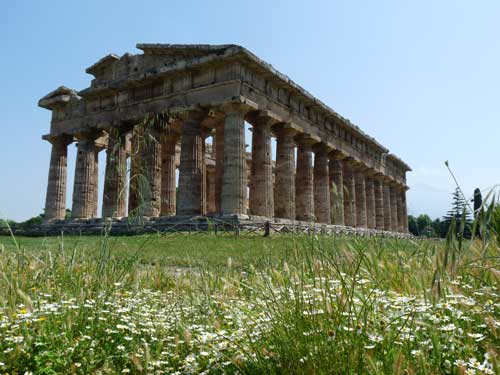
The history of Paestum
The town of Poseidonia – later called Paestum – was built by Greek colonists from Sybaris, an earlier Greek city in southern Italy, in around 600BC. It grew and prospered and now has among the most extensive remains of Magna Graecia ( Magna Grecia in Italian). In 410BC the town was conquered by the Lucanians, a native Italian people, then in 273BC the Romans took over, changed the name to Paestum and began their own building programme. As the Roman Empire collapsed, Paestum crumbled. Malaria and Saracen raids led to the near-abandonment of the town and the development of Capaccio, a safer hillside settlement.
Paestum itself was pretty much forgotten. An information board outside the old church gives a poignant image of the locale as an abandoned wilderness frequented by brigands. Things changed with the eighteenth-century rediscovery of the temples by road-builders coupled with a revival of interest in antiquities and the visits of Grand Tourists and indefatigable travellers like Shelley and Goethe. The classical name Paestum was revived (though Capaccio is still the local authority). Nowadays most of the vanished city of Poseidonia-Paestum is hidden under agricultural land. The ancient city walls, constructed with massive stone blocks, encircle a large area of countryside, much of it unexcavated. Right in the middle is the archaeological zone open to the public, and a few later buildings housing small tourist businesses.
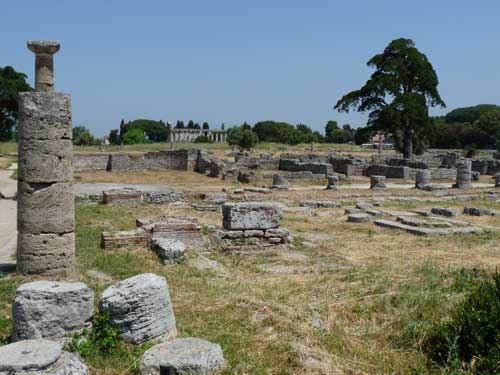
What is there at Paestum?
The archaeological site at Paestum covers a large area and takes as much as two hours to explore thoroughly. A street runs along the railings outside the site and here, in the middle of surprisingly rural surroundings, you’ll find a busy little row of souvenir shops and several bars with outside tables serving drinks, rolls, ice creams and snacks. For more filling evening meals, you can walk further along the road to find a pizzeria and – on Via Tavernelle – a couple of restaurants including the excellent Granaio dei Casabella hotel/restaurant where we ate and slept.
The cluster of buildings near the excavations doesn’t have the size or atmosphere of a normal residential town or village, but there is one little square, where you’ll find the pretty and historic local church, a tourist information office, a cafe and a drinking-water fountain. And the early evening, when we visited, brought forth a typical Italian passeggiata , with families strolling along the street and chatting with friends. The museum is opposite the archaeological site and again it takes some time to tour it attentively. Some of the nicest features of Paestum are the surprises: a white peacock stalking over a field, roses blooming to evoke the past (ancient Paestum was famous for its roses), the stretches of picturesque large-blocked city wall.
Although you can see the sights of Paestum in a day trip, the atmosphere is so magical and so peaceful that it really merits an overnight stay. We arrived in the early evening, saw the temples shimmering pink in the sunset, enjoyed a relaxing drink at a bar with views of the archaeological site, then had a fine meal at our hotel, where our bedroom window had a view of a temple illuminated in the dark. The next day we were able to explore the site in a leisurely fashion, visit the museum and eat lunch before catching the train onwards. Although seasoned travellers, we found Paestum to be a really special and memorable experience.
If you are staying longer, and have a car, you will find other interesting ruins and another museum within easy reach of Paestum. The Heraion, a Sanctuary of Hera, by the mouth of the river Sele, dates to the sixth century BC and has its own museum (limited opening hours), though many of the local finds are in the main Paestum museum. Paestum’s UNESCO listing incorporates the National Park of the Cilento, the ruins of the Greek city of Elea/Velia, and the Certosa (Charterhouse) at Padula, and these make good starting-points for a visitor exploring the area.
Archaeological site and museum
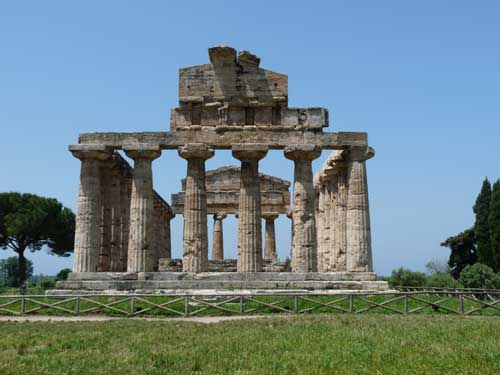
You can buy separate tickets for the archaeological site and the museum but if you’re visiting both it is cheaper to purchase a combined ticket. There are various categories of discount, as at all Italian state-run monuments. The outdoors attraction is open daily; the museum is closed on the first and third Mondays of each month (check the latest times/days before you travel).
The archaeological area at Paestum covers the heart of the ancient city. The most dramatic sights, which led to the site’s rediscovery, are the three Doric temples. Roofless, but still standing, these are among the greatest archaeological monuments in Italy. The smallest of the three, standing on a small rise, was dedicated to Athena, though it’s also known as the Temple of Ceres. This temple later became a Christian church. The oldest of the buildings, the Temple of Hera, is at the further end of the site and not far away is the most imposing and well-preserved, the Temple of Neptune (or Poseidon). One of the finest surviving examples of a Greek temple, this is a huge and dramatic building, surrounded by steps and a colonnade of majestic dimensions. The ruin has no roof, but the pediments and ornamentation give a good idea of how the building would have looked.
Paestum is not all about temples, though. The extensive area which is open to the public includes civic buildings, the Roman forum and amphitheatre, paved roadways and ruins of residential buildings. Pathways are kept clear, but tall grass and flowers drown many of the low walls and tumbled masonry. Visitors can pick their way through overgrown areas for picturesque views and sprawling, half-uncovered Roman and Greek remains. The most intriguing spot is the ‘Heroon’. This was probably a kind of symbolic tomb of a city founder or mythical hero. Inside a stone chamber dating to the sixth century BC, archaeologists found offerings including large, beautiful vases containing honey, now displayed in the museum.
The museum at Paestum is just opposite the archaeological site. Exhibition rooms are quite rambling and extend over several floors, so it takes a bit of investigation in order to see everything that is on display. The museum houses sections of pediment, decoration and sculptures from the archaeological area and from other nearby sites, mostly dating to the Greek era and some showing a clear relationship with Etruscan artworks from central Italy. The museum also contains paintings and grave goods from tombs in and around Paestum. The most famous of these is the fresco from the ‘Tomb of the Diver’, a remarkable oddity. This is the only extant wall-painting from a Greek tomb, and shows a simple image of a solitary man diving into water. Other tomb-paintings in the museum date from the Lucanian era and show scenes of fighting, hunting and celebration.
If you are visiting Paestum and are interested in the site’s history and context, it is worth taking a guidebook or purchasing one on the spot. There are bilingual information boards around the temples, which help to explain the ruins. It is also worth allowing time to tour the museum, even if you focus only on highlights like the tomb-paintings.
Paestum travel and transport
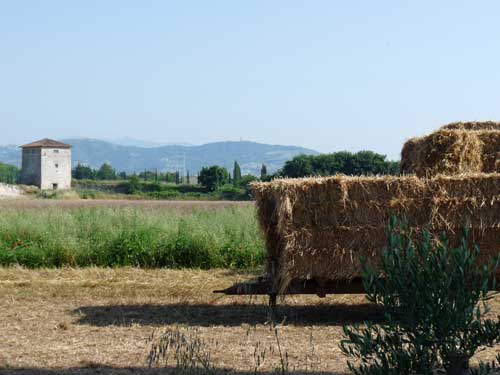
Paestum is on a railway line connecting Salerno with Sapri to the south. If you are coming from the Amalfi Coast, take a boat or bus to Salerno before catching the train. From Naples and northern parts of Italy, change in Salerno. The journey from Salerno takes just over half an hour. There are signs announcing ‘Paestum’ along the platforms, but it’s not a bad idea to check the order of stations and count the number of stops to make sure you know when you’ve arrived. There is no ticket office at Paestum station, so you should either buy your return train ticket in advance, or visit a useful shop by the archaeological site which sells rail tickets. Trains are not very frequent, so plan your journey in advance.
The station is by one of the old gateways into the historic town. Nowadays this lies in the countryside and when you walk through the archway, instead of a busy city you’ll find fields, haystacks, birds and butterflies. The archaeological area lies straight ahead, through the archway and a 15-minute walk down a quiet country lane. Arriving like this, on foot, you really appreciate the idyllic setting; so different from the nearby towns of Naples and Salerno.
Paestum is also served by buses from Salerno, run by local transport companies CSTP and Giuliano (see links panel).
Accommodation
Paestum can be visited as a day-trip from Naples, Salerno or the Amalfi Coast, but holidaymakers on a tour of Italy may find it a good overnight stay on the journey south. Public transport and road links mean that it would also be possible to plan a longer stay based in Paestum and exploring the surrounding area.
There is not a great deal of accommodation close to the archaeological site at Paestum. We stayed in a very good country-style hotel, the Granaio dei Casabella, just a short walk away, and would recommend it as a comfortable base for visiting the ruins. Other, more modern hotels are grouped close to the seaside around a mile away.
> Paestum: Granaio dei Casabella > More hotels around Paestum
On this site
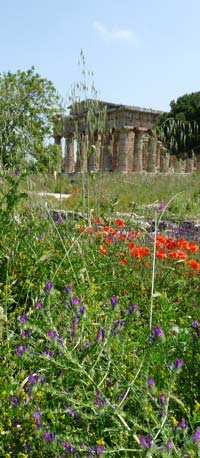
More destinations in Campania
South to Calabria: a travel itinerary starting in Paestum
Get around Italy
Other UNESCO sites in Italy
Useful links
Paestum hotels & B&Bs
Giuliano buses
- Search Please fill out this field.
- Newsletters
- Destinations
Paestum: Planning Your Visit
:max_bytes(150000):strip_icc():format(webp)/james-globe-56a3a1c05f9b58b7d0d2e4e5.jpg)
History buffs will enjoy a visit to the ancient Greek city of Paestum in southern Italy. An archaeological site, and one of the most interesting stops on the Amalfi Coast , these ruins feature three of the world's most complete Doric temples, dating back to circa 600 to 450 BCE. The temples include the Basilica of Hera, the Temple of Athena, and, on the southern end of the site, the Temple of Neptune, which was built in 450 BCE and is considered the most preserved of Italy's Greek temples .
The ruins, coined a UNESCO World Heritage site, are located in the Italian region of Campania, known for some of the best food in the country. They lie in the middle of a dense tourism zone that includes must-see locales like Pompeii, Herculaneum, the Amalfi Coast , and Naples . While there, make sure to take in the dramatic coastline and visit other ancient sites, castles, and palaces.
Around the seventh century BCE, Greece began to colonize parts of southern Italy and Sicily by founding colonies among the small, agrarian settlements. The arrival of the Greeks—in this case, Achaeans coming from Sybaris—first built fortifications on the coast, and then moved inland to build their city. The city-state of Paestum, first named "Poseidonia" in honor of Poseidon, the god of the Sea, was built in a spot chosen for its fertile plain and seaport.
The city suffered a serious population decline during the 2nd century BCE, when its economic fortunes declined due to the construction of the new roman Highway which bypassed the city. And then, late in the 1st century BCE, the city was partially affected by several earthquakes, as well as the eruption of Mount Vesuvius. After that, Paestum's drainage system became severely compromised, resulting in floods and making the swampy and mosquito-ridden area an unhealthy place to live. Many of the remaining population fled to the hills to avoid malaria, and the others who stayed fell in Saracen raids.
Paestum was "re-discovered" in the 18th century, when poets like Goethe, Shelley, Canova, and Piranesi visited and wrote about the ruins while on the " Grand Tour ." Today, Paestum contains an adjacent archaeological museum , alongside the old town, which houses collections of ancient artifacts.
A trip to Paestum takes you back to an unimaginable time by modern standards. This era can only be experienced by immersing yourself in the remnants of the three existing temples, an amphitheater, and a cultural museum.
- Temple of Hera: The Temple of Hera is the oldest of the three temples in the city of Paestum (built in 550 BCE), and was first thought by archaeologists to be a Roman public building, or basilica . Inscriptions in the temple mark its dedication to Hera, the goddess of women, marriage, family, and childbirth, and its open-air altar allowed worshippers to make sacrifices without entering the cella (holy area).
- Temple of Athena (or Ceres): This temple, thought to be used as a Christian church, was built in 500 BCE and shows early Doric architectural features. The grounds consist of a typical Roman forum, surrounded by the foundations of various public and private buildings. In the 1930s, a civil engineer built a road across the northern half of this site and was tried and sentenced for destruction.
- Temple of Neptune: The well-preserved temple of Neptune remains almost completely intact, except for the roof and a few sections of the inner walls. It contains impressive rows of columns, two altars, and statues that indicate its dedication to Apollo, the god of archery, music and dance, truth and prophecy, and healing and diseases.
- Amphitheater: Nearby the Temple of Athena sits the amphitheater, a central element of the old town, which is partially buried by the new road. Built in 500 BCE, this amphitheater is one of the earliest existing amphitheaters in the world. It's constructed in a typical Roman pattern, but only the western half is still visible today.
- National Archaeological Museum of Paestum: The Tomb of the Diver—constructed in 480 or 470 BCE and containing a plaster depiction of a man plunging into a pool of water—is one of the main attractions at this on-site museum. The museum also contains other tombs with interesting depictions that date back to the fourth century BCE. Other artifacts on display include terracotta figurines of goddesses, painted vases, and the remnants of limestone metopes.
Visiting Paestum
Paestum makes a great stop-off for anyone visiting this section of Italy, and it's best enjoyed in the slack season when the weather is mild. However, if you choose to come during the winter, you get a discount on admission fees.
- Best Time to Visit: The best time to visit Paestum is during the months of May and October, when the temperatures hover around 20 degrees C (68 degrees F) and 25 degrees C (77 degrees F), respectively. If you travel during these months, you'll avoid the tourist crowds of summer.
- Location: Paestum is located in the Province of Salerno in Campania, Italy.
- Hours: The archeological area of the ruins is open every day from 8:30 a.m. to 7:30 p.m.
- Admission: From December through February, the cost for an adult to visit Paestum is 6 Euros; admission for students 18 to 25 years of age is 2 Euros; a family pass is 10 Euros. From March through November, admission for adults doubles to 12 Euros, students cost 2 Euros, and a family pass is 20 Euros.
- Tours: Day tours include a two-hour guided Greek temple tour of Paestum and the Archeological Museum , combined with a visit to a buffalo mozzarella farm, and a tour of Paestum with a certified archeologist. These tours allow you to skip the line and enjoy the site in a small group.
Getting There
To get to Paestum from Salerno or Naples by car, take the autostrada A3 motorway to Battipaglia, exit toward SS18 (the Paestum exit). The trip is approximately 50 minutes from Salerno and an hour and a half from Naples. Paestum is also accessible by bus, with frequent service available from Salerno or Naples. CSTP bus 34 in Salerno takes about an hour to Paestum, and from Naples, the trip takes around 85 minutes. You can also take a 30-minute train ride from Salerno, or an hour and a half ride from Naples (make sure it's a local train that stops at Stazione di Paestum) . From the train station, head west, walking approximately 15 minutes and crossing through the gate in the old city wall (Porta Silena). Then, continue until you see the ruins in front of you.
Where to Stay
Since Paestum is near the Amalfi Coast, you can combine a visit to the ruins with a trip to the beach, by staying in a centralized location, like a residential vacation rental. However, you can also book a boutique hotel in Capaccio or Paestum, like the Mec Paestum Hotel or the Grand Hotel Paestum , and stay closer to the ruins. Also, since Paestum is located in a foodie-rich part of the country, world-class dining options are sprinkled throughout the area, including the popular seafood restaurant known as Ristorante Nettuno .
Related Articles
More related articles.

Guide To Visiting Paestum, Italy’s Ancient Greek Gem
Tucked away just south of the renowned Amalfi Coast lies the town of Paestum, a vivid testament to Italy’s ancient history. If you’re gearing up for a visit, this is the ultimate guide to experiencing Paestum’s Greek and Roman wonders.
This comprehensive overview takes you on a journey through the archaeological site, highlighting all the captivating sights awaiting your exploration.
The UNESCO-listed Paestum stands as a veritable treasure trove of awe-inspiring Greek archaeological marvels, the finest on the Italian mainland.
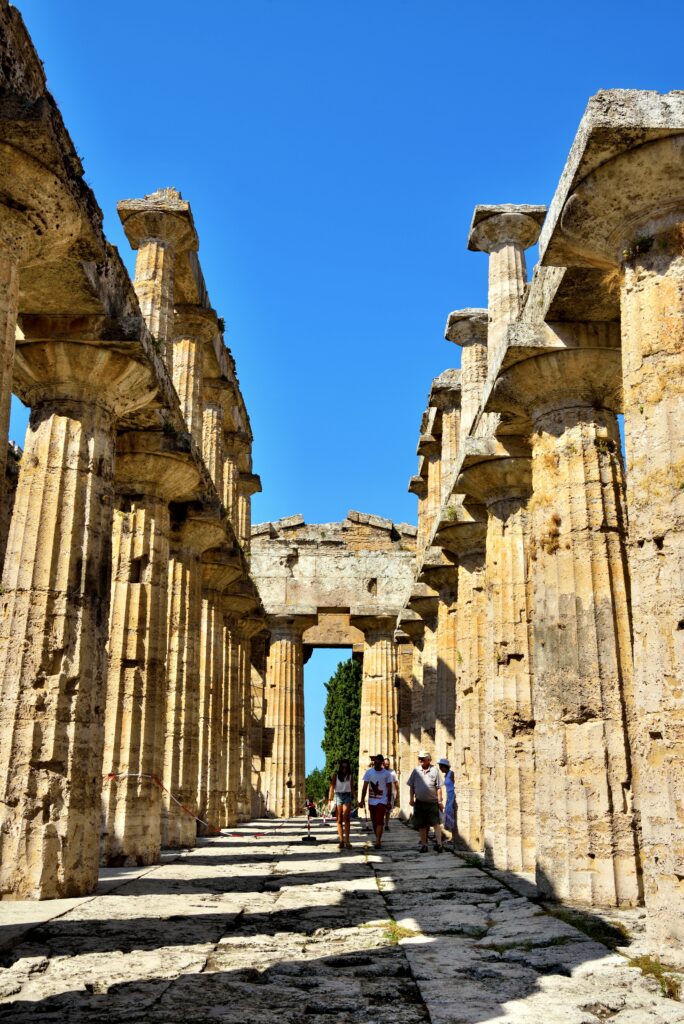
The site is only surpassed by the superb Valley of the Temples in Agrigento Sicily . But Paestum offers a more condensed and accessible experience.
>>> Click here to pre-book a Paestum ticket
What Is Paestum: A Short History
Paestum was once a vital part of Magna Graecia, or Greater Greece. It proudly showcases three exceptionally preserved Doric temples that harken back to the years 650 to 450 BC.
In the 6th century BC, the Greeks colonized the southern part of Italy, including Campania, Sicily, and Calabria. Around 600 BC, Poseidonia was established and named after the Greek god of the sea.
Paestum flourished as a Greek city, featuring an agora, roads, and splendid temples.
In the 5th century BC, the indigenous Lucanians took possession of the city. They renamed it Paestum.
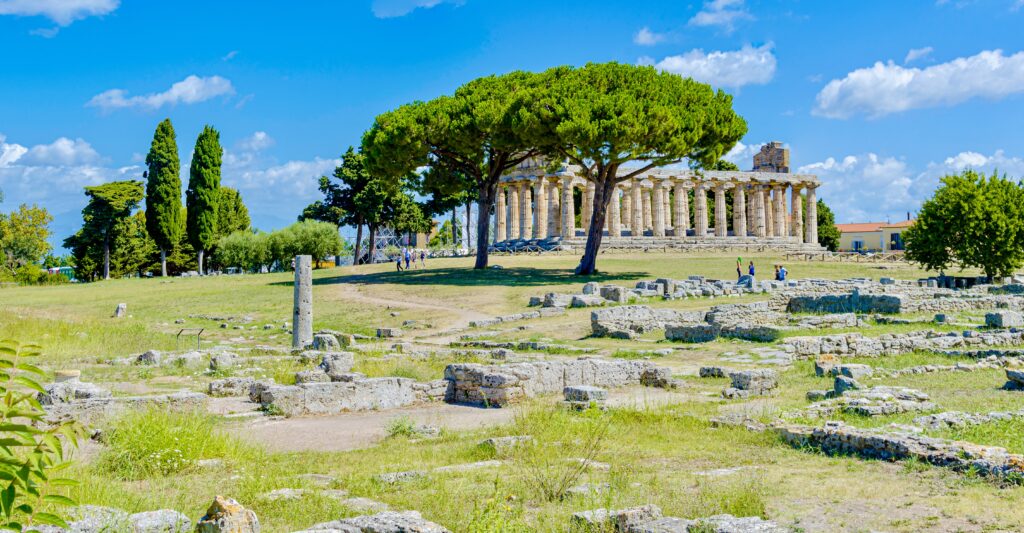
With the Pyrrhic War, Rome conquered Paestum. It was transformed into a Roman city in 273 BC. Roman structures were erected atop some Greek sites, like the Roman amphitheater and forum.
During the Middle Ages, Paestum faced a decline and eventual abandonment. The fall of the Western Roman Empire, political instability, changing trade routes, the plague, and the gradual shift of power to other regions all played a part in diminishing Paestum’s significance.
However, after centuries of oblivion, Paestum was rediscovered in the 18th century. This was about when Pompeii was unearthed and excavated as well.
In 1998, Paestum was recognized as a UNESCO World Heritage Site.
Today, Paestum boasts three remarkably preserved Greek temples, an amphitheater, forum, houses, and ancient roads. It’s a captivating journey through the ancient past!
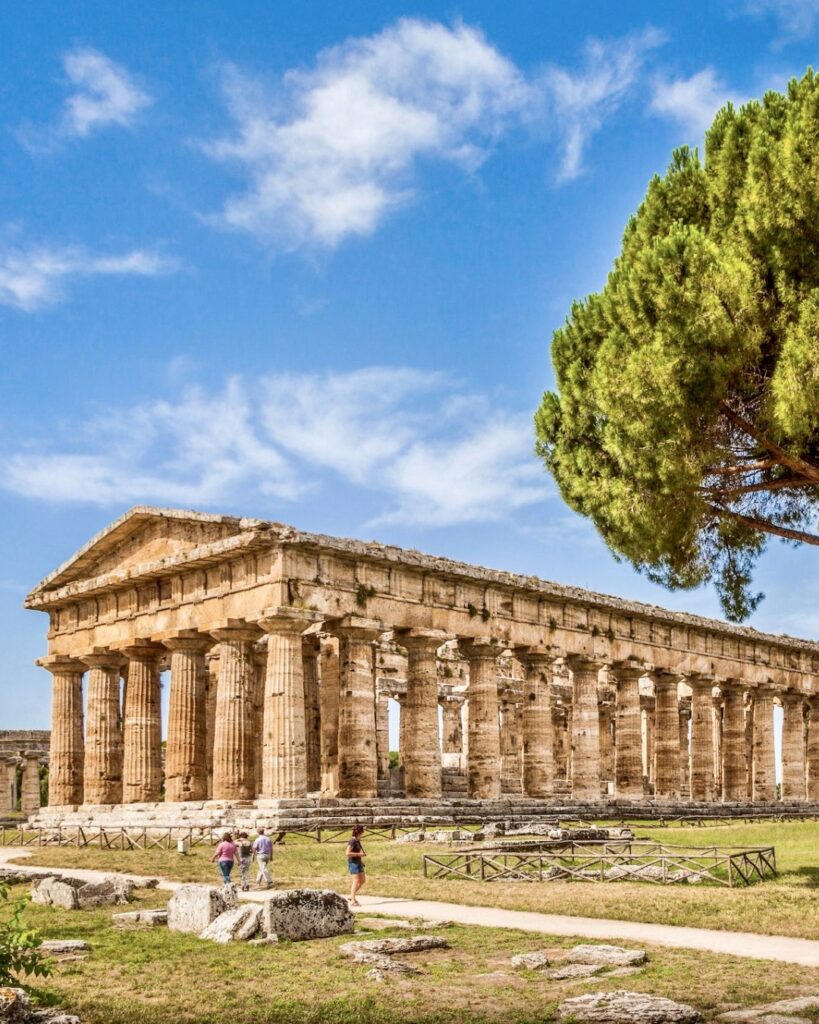
Guide To Paestum: What To See
Begin your visit at the visitor center, where you can obtain maps, information, and any necessary tickets.
Much of the forum and other parts of town are in ruins. But there are three absolutely magnificent temples and a first rate museum. Via Sacre runs the length of the site and connects the temples.
If you are a history buff, you may want to book a guided tour with an archaeologist or a 2 hour private tour .
Here’s a rundown of what you can see on a visit to Paestum.
1. Temple of Neptune (Poseidon)
As you step into the park, you’ll be greeted by the majestic Temple of Neptune, also known as the Temple of Poseidon or the Temple of Hera II.
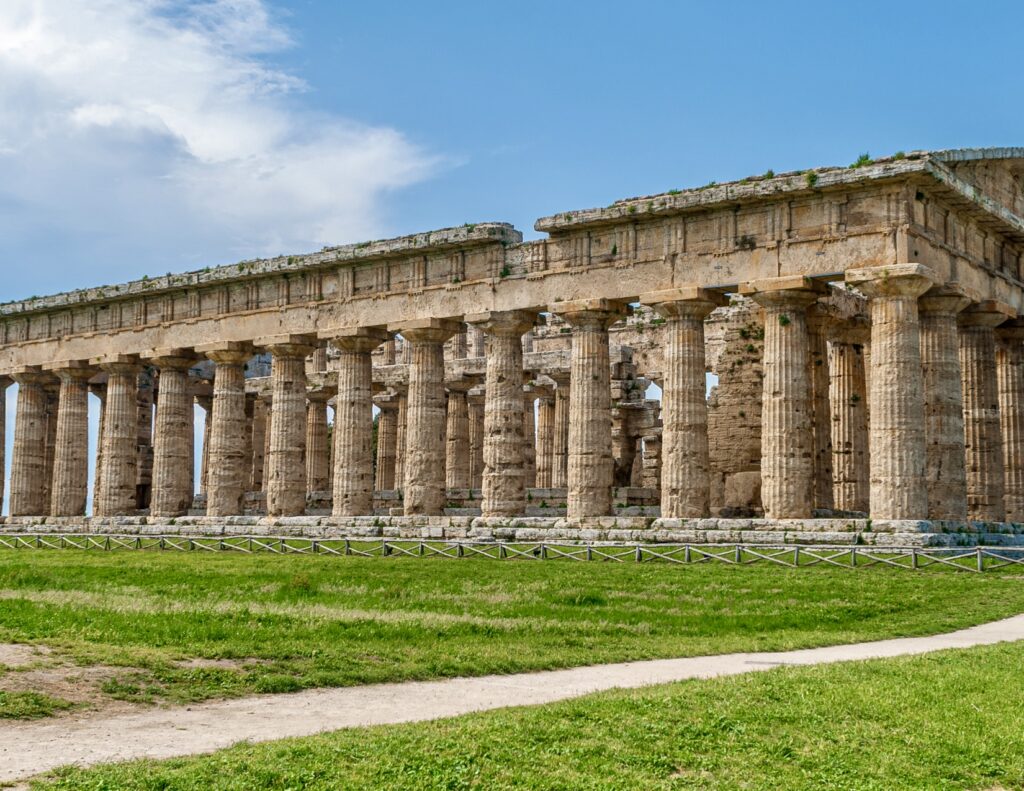
Among Paestum’s treasures, this is the youngest and best preserved of the set of temples from Magna Graecia. It’s akin to the Parthenon in Athens .
Erected in 450 BC, it stands as a textbook example of Doric architecture, capturing the essence of Italy and Greece. It’s lined in travertine stone that appears gold when the sun shines on it.
The temple stands on a high platform with six columns on the front and back, and fourteen columns on the sides. It’s known for its elegant proportions and intricate details.
The imposing columns appear lighter than they are due to the grooves carved into the shafts. The intent was to play with light and shadow and give the effect of the folds of a peplos , a traditional Greek dress.
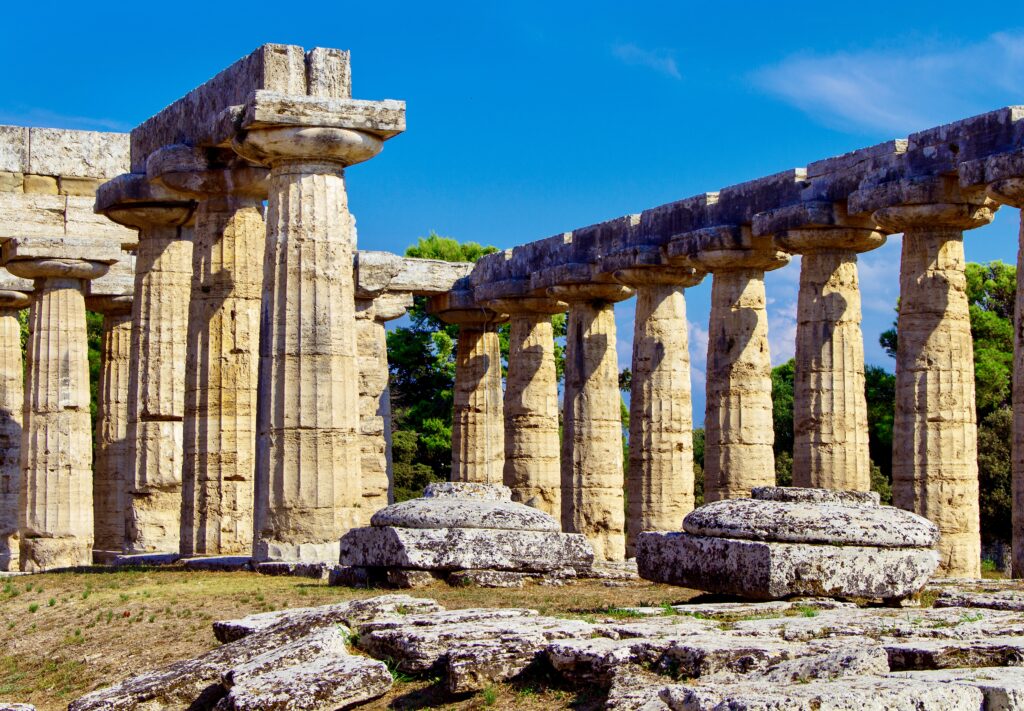
The temple’s entablature and pediments have survived nearly intact. The frieze once consisted of triglyphs and uncured metopes. Only the roof and internal walls of the cella are missing.
The cella once held a statue of the god Neptune.
In the past, scholars believed that the temple was dedicated to Neptune/Poseidon. But recent studies propose that it might have been built to honor Apollo instead.
Visitor can access the temple’s interior, although entry is limited to a small group at a time. So, a short wait in line might be required. But it’s well worth it.
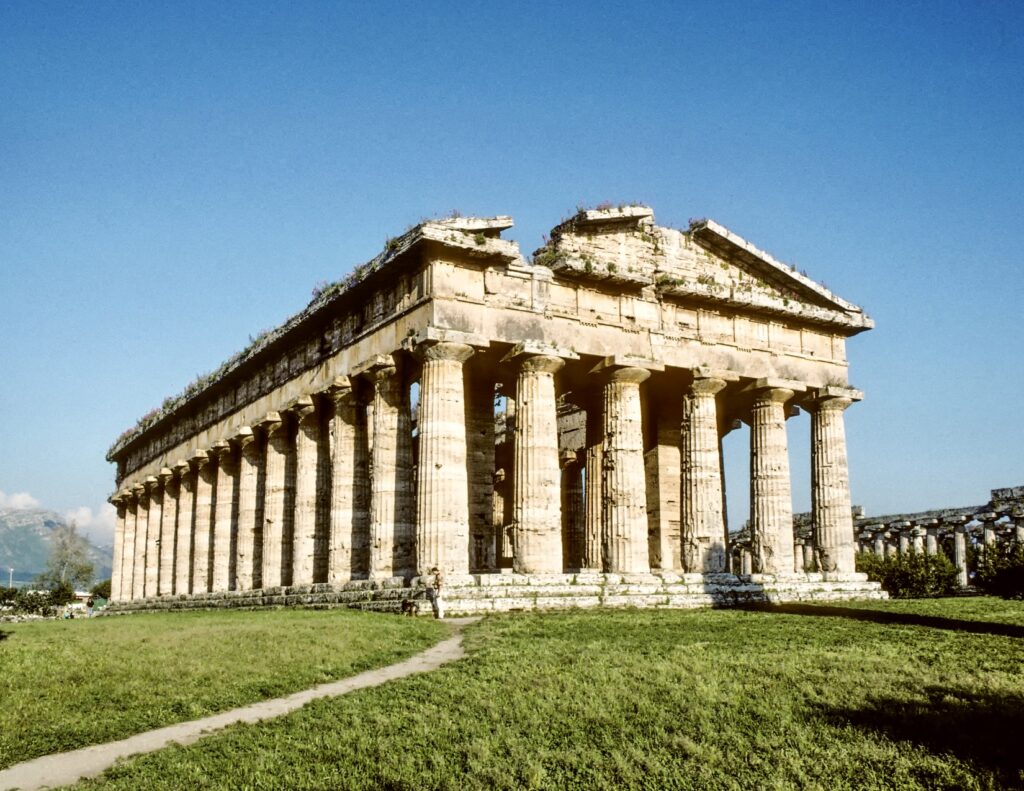
2. Temple of Hera
Built around 550 B.C., the Temple of Hera I is the oldest and smallest of the temples.
It was once known as the “Basilica,” after it was misidentified by 18th century archaeologists. They mistakenly thought the lack of pediments meant that it had a civic function.
But the discovery of ex-votos and inscriptions allowed the temple to be rightfully restored to its association with ancient Greek goddess Hera, wife and sister of Zeus. She was considered the queen of the gods and the goddess of marriage and childbirth.
The delicate temple stands on a high podium with six columns on the front and back, and thirteen columns on the sides. It’s a bit wider than most Greek temples.
A statue of the Zeus has been reconstructed from fragments found between the Temple of Neptune and the Temple of Hera. It’s in the archaeological museum.
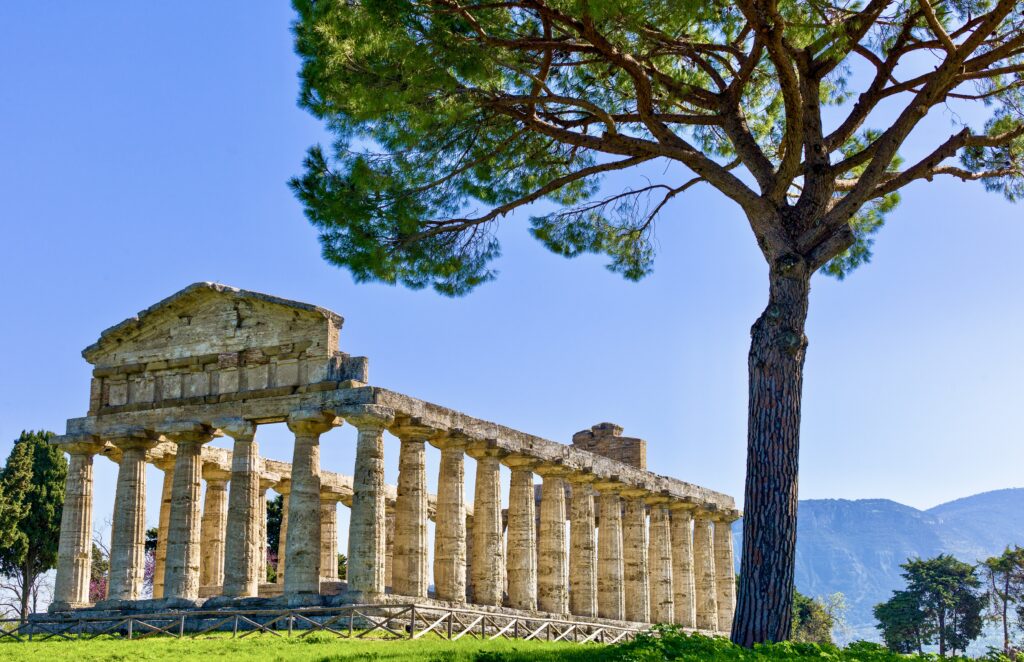
3. Temple of Athena
Constructed around 500 BC, during the zenith of Greek influence, the Temple of Athena is crafted from local limestone. It features the characteristic attributes of the Doric order, including unadorned columns with plain capitals.
The temple’s design is peripteral, enveloped by a colonnade of Doric columns that contribute to its harmonious proportions.
The temple was dedicated to the goddess Athena. She symbolized wisdom, courage, and strategic warfare in Greek mythology. It served as a center of devotion and offerings to seek the blessings of the revered deity.
The temple’s dimensions measure approximately 80 feet by 200 feet. It features a facade adorned with nine columns and eighteen columns on the sides.
Unlike the Neptune and Hera temples, you cannot go inside this one.
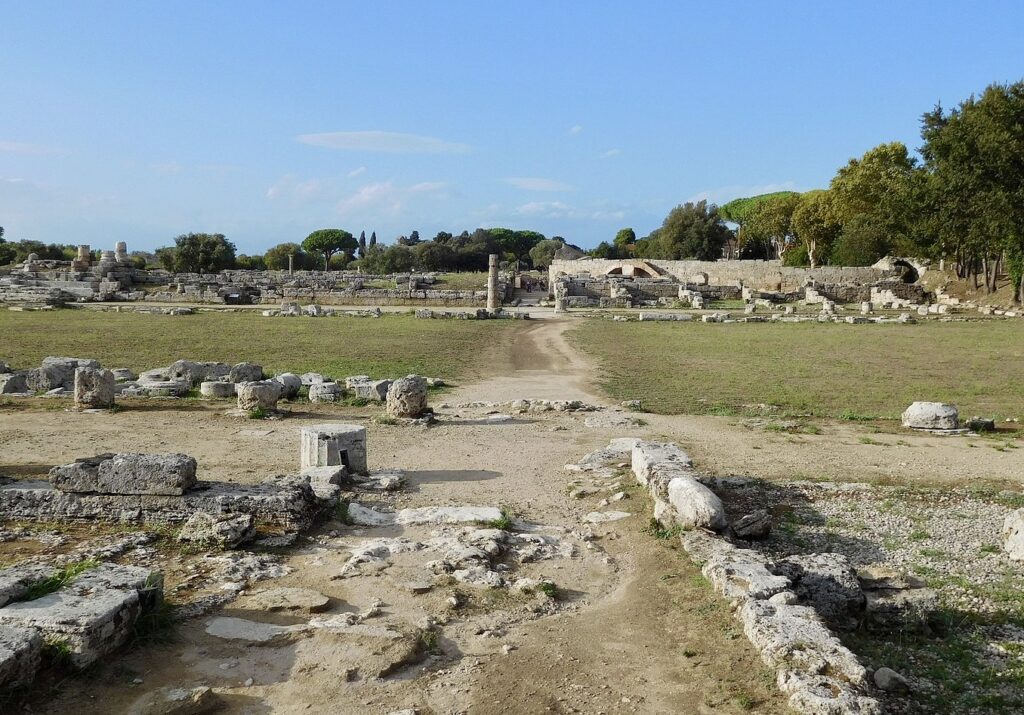
4. Roman Forum
In Roman cities, the forum was the heart of city life. The forum in Paestum was no different. And it’s in the central part of the complex.
In its present guise, the forum is the result of a layout carried out when Emperor Augustus ruled. The colonnades surrounding the square were built and the floor level was lowered.
The area was surrounded on all sides by tabernae (shops) and a macellum (covered market).
You can also make out traces of public buildings like the basilica, small shrines, and a city archive. Some of the shops even retain their original flooring.
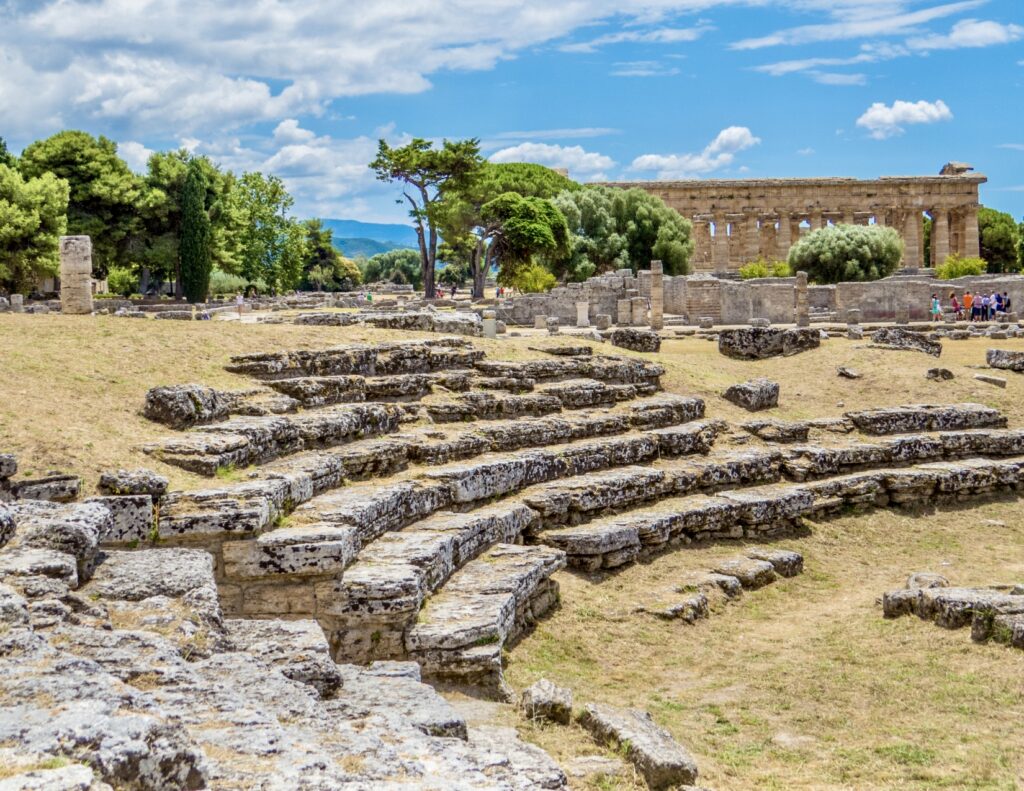
5. Amphitheatre
The Pastum amphitheater dates from the 1st to 2nd century AD. Only the western half has been excavated and is visible today.
This arena, like other Roman arenas, was used for circus shows and gladiatorial games.
The tunnel that led to the theater is still intact. It would have been used for transporting animals and props to the arena floor.
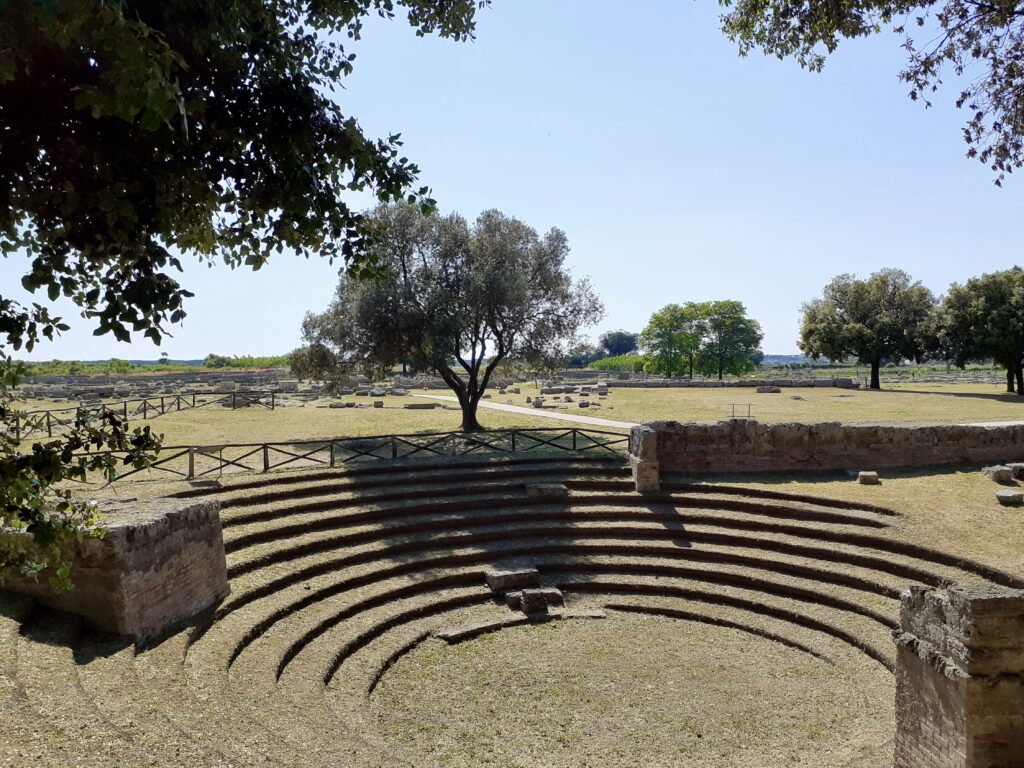
6. Ekklesiasterion
The Ekklesiasterion is oldest building in the agora, dating back to 480-470 B.C. It’s not terribly well preserved, but still offer insights into the democratic practices and civic life of the city.
The Ekklesiasterion was the citizens’ assembly hall and used for public meetings. The term ekklesia referred to the assembly of male citizens who participated in the democratic governance of the city-state.
The structure was circular in shape and had tiered seating in concentric rings. It was designed to provide clear visibility and audibility to all participants, ensuring that debates and discussions could be conducted effectively.
It was used until at least the 3rd century.
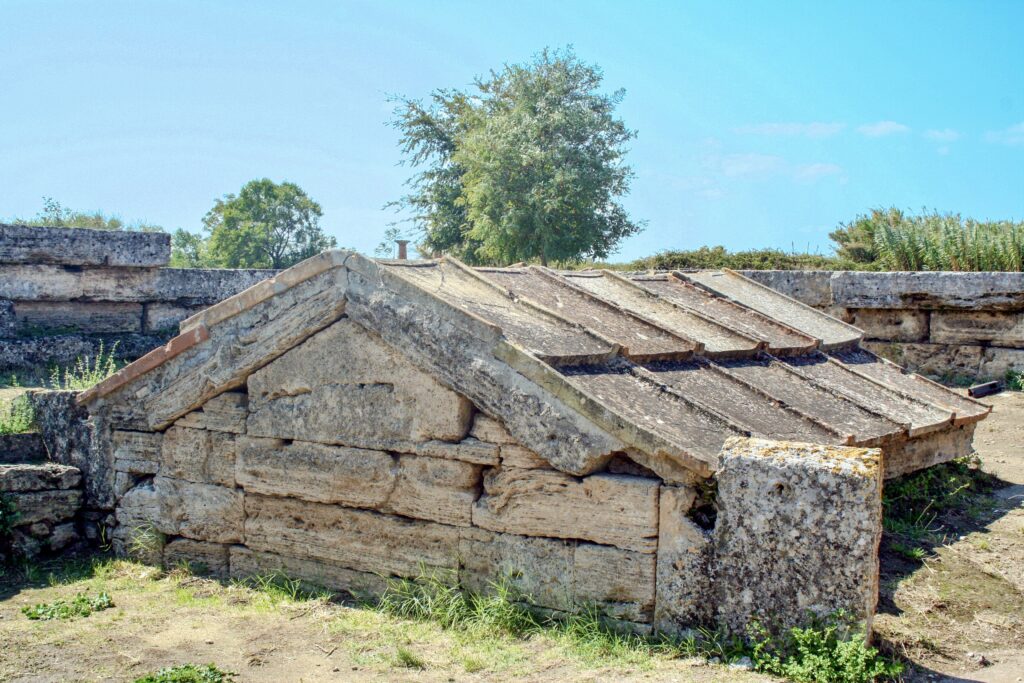
The heroon from 520 BC is located near the forum and adjacent to the Temple of Athena. A heroon is a chamber that was partially carved into the bedrock.
It’s believed to have been built to honor the city’s legendary founder, even though it was constructed around a century after his passing. This commemorative structure took the form of a simple tumulus, encircled by a protective wall made of large stones.
During its excavation in 1954, a fascinating discovery came to light at its core: a stone chamber with a pitched roof. This chamber was positioned partly below the ground level and partly above it.
Inside this chamber, a remarkable array of finds was unearthed. The included several unusual bronze vessels and an Athenian pottery black-figure amphora from 520–500 BC. Today, these artifacts are in the museum.
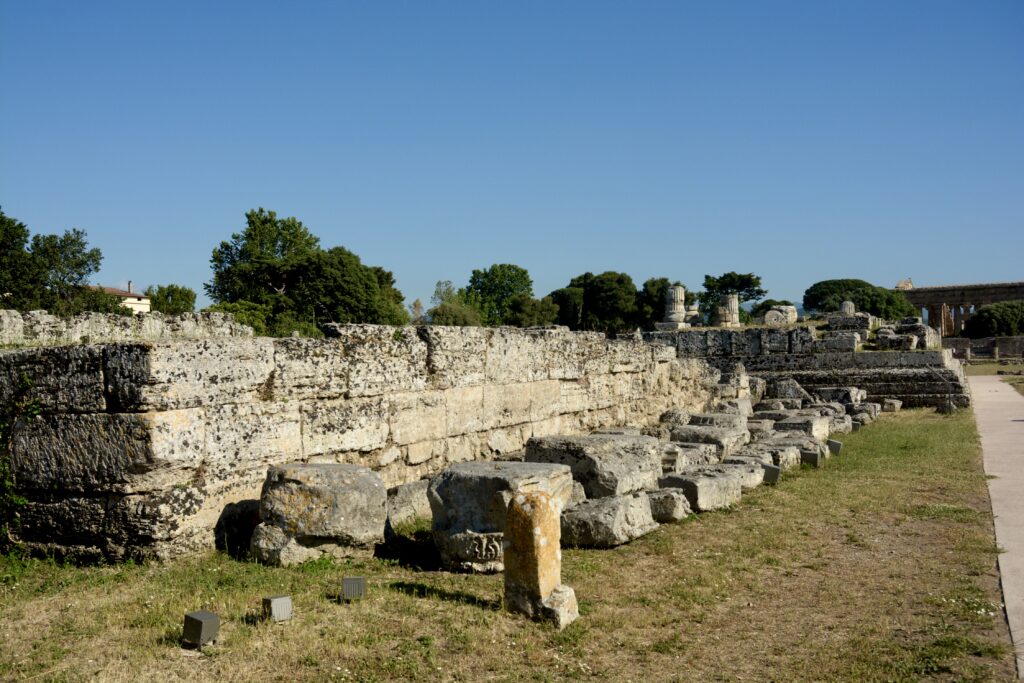
8. City Walls
The city walls of Paestum are some of the best preserved from Magna Graecia. Their building and layout took place over a period from the 6th to the 1st century BC.
Built of blocks of limestone, the walls are no longer their original height.
There were once 28 towers around the perimeter. Two of them were restored in the 20th century.
There are four gates to the city. At the Porta Marina, you can climb the walls and have excellent views of the ruins and the coast.
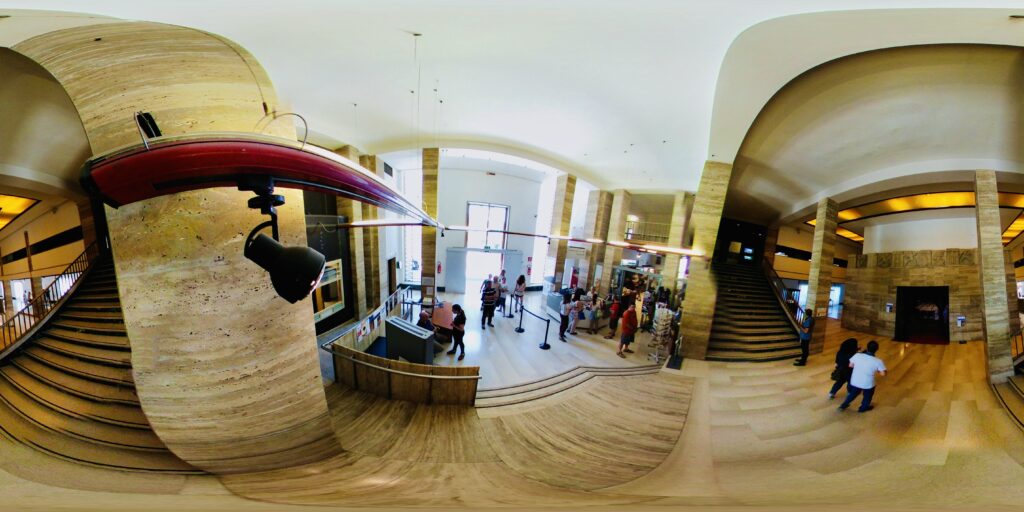
9. National Archaeological Museum Of Paestum
The Paestum Archaeological Museum is a must visit! Opened in 1952, it’s near the entrance to the site and you may want to visit this first to get a sense of what the temples once held.
This modern museum houses archaeological finds from centuries of excavation at the Paestum site. There are sections on Paestum’s prehistory, the Lucanian civilization, Greek Paestum, and Roman Paestum.
You’ll find Greek statues, terracotta pieces, Neolithic, Bronze, and Iron Age pottery, coins, jewelry, and tomb paintings.
Of particular note is a frieze from the nearby Sanctuary of Hera. The decorative panels includes mythological scenes that would have delighted a 6th century B.C. audience.
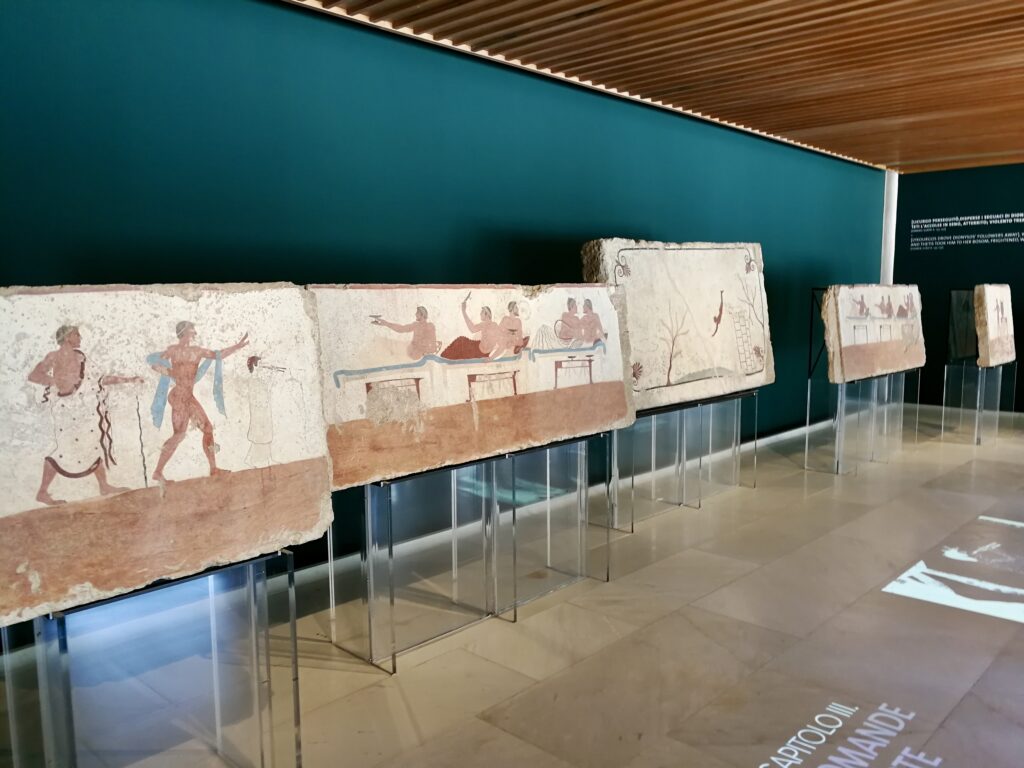
One is a comical story of Hercules and the Kerkopes. Hercules was asleep when two scamps stole his weapons.
He tied them to his pole and carried them over his shoulder. When they laughed at his hairy back, Hercules was amused and decided to let them go.
Other things to see include:
- a bronze vase from the Heroon
- a krater vase portraying the rape of Europa
- flower women votives from the temples
- painted Lucanian tombs
- dancing girl metopes from the Temple of Hera
- a 1st century portrait bust of Tiberius
- an Aphrodite vase
- red figure vases
- statuettes of Venus
- artifacts from the necropolis of Gaudo
READ : Guide To The Naples National Archaeological Museum
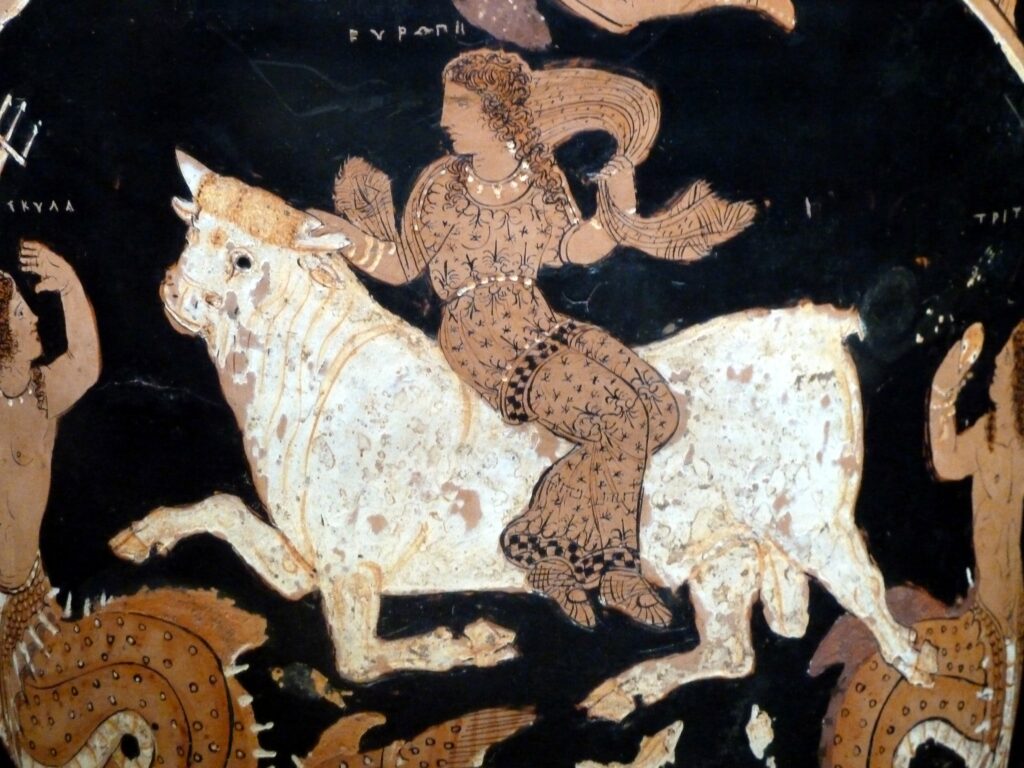
10. Tomb of the Diver
The star of the museum is the Tomb of the Diver, an ode to eternity. In 1969, a farmer in the area discovered the only known ancient Greek frescoes from a tomb dating from 470 BC. It was an extraordinary archaeological find.
There is some debate about whether it was created by the Greeks or the Lucanians. But most historians believe it was the indigenous Lucanian inhabitants of the region.
Crafted from five limestone slabs, this enigmatic tomb features four walls forming its enclosure and an extraordinary fifth slab that serves as the tomb’s ceiling or roof. It is from this captivating roof that the tomb gets its name.
The image depicts an athletic young man gracefully diving into a stream of water, almost into the unknown.
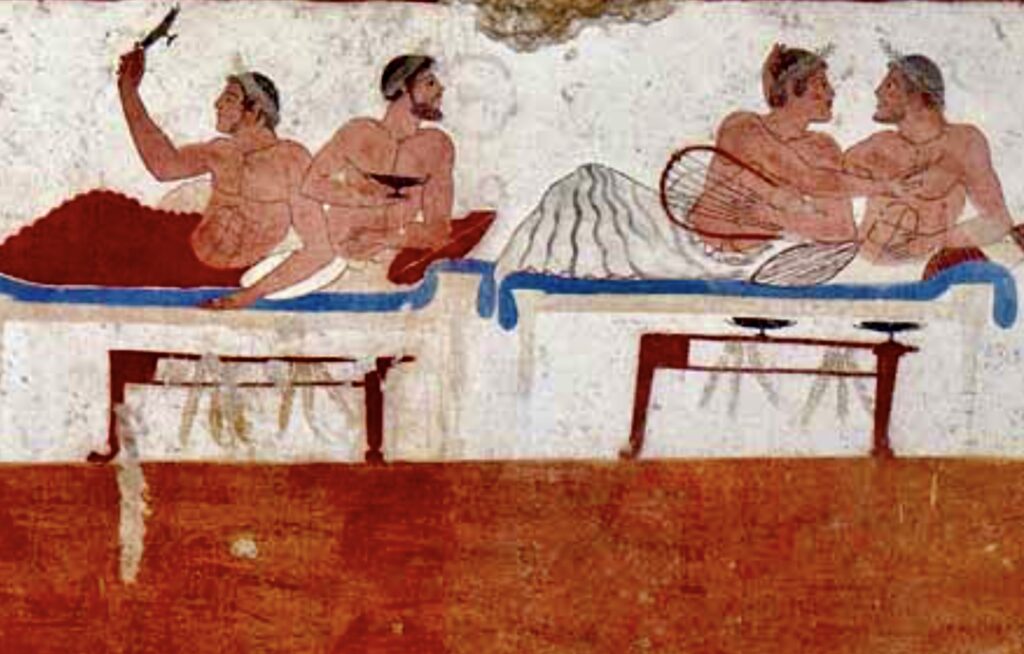
The meaning has long been debated. But it’s most likely a symbol of passing into the afterlife. Is there a new world of life beneath the water?
Inside the tomb, four walls are adorned with buon fresco paintings — true frescos rapidly painted on wet plaster.
They capture scenes of a lively symposium – basically a Greek drinking party. They are most likely giving the diver a good send off.
There are some homosexual scenes. In one of the longer panels, two lovers are on the right. Another two men sit on a couch watching them.
These paintings are unique and very significant because they represent the only known surviving ancient Greek frescoes with figurative imagery from this period.
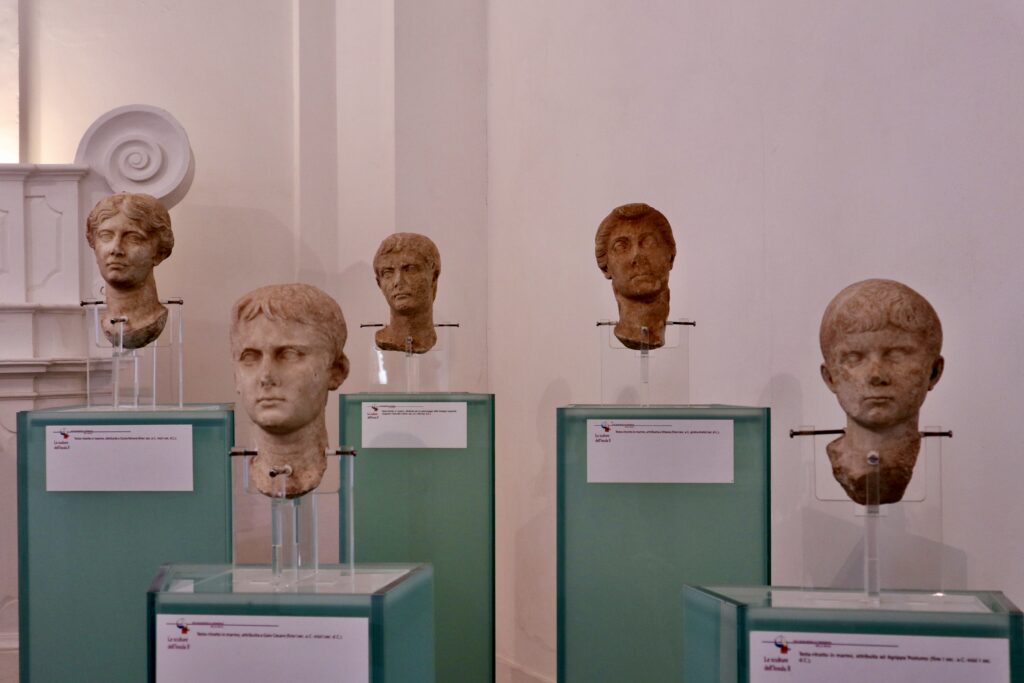
Guide To Paestum: Tips For Visiting
No guide to Paestum is complete with some must know tips for visiting the site and museum.
1. Where Is Paestum
Paestum is located in the Campania region of southern Italy. It’s situated on the Tyrrhenian Sea coast, in the province of Salerno. The town is considered to be the “capital” of the Cilento region.
Paestum is about 55 miles from Naples and 3 hours from Bari in Puglia .
Paestum is relatively close to the Amalfi Coast too, making it a feasible day trip destination from the coastal towns. Here are the times:
- Amalfi Town to Paestum : Approximately 35 miles via car, taking around 1.5 to 2 hours
- Positano to Paestum : Approximately 40 miles via car, taking around 2 hours
- Sorrento to Paestum : Approximately 56 miles via car, taking around 2 to 2.5 hours
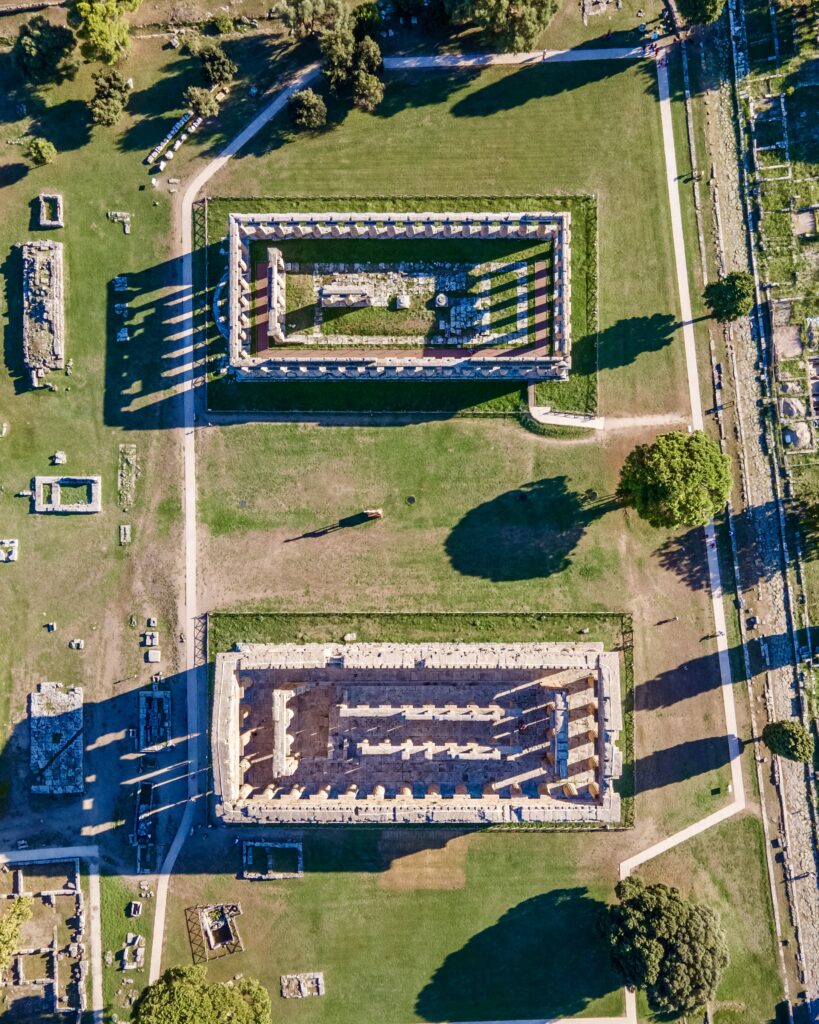
2. How To Get To Paestum
If you’re driving, follow the S18 south of Salerno. At Paestum, there are designated parking areas available for visitors.
The main parking lot is near the entrance to the archaeological site, making it easily accessible. Additionally, there are often parking spaces available along the roads leading to the site.
You should plan to arrive arrive early, especially during peak tourist seasons, to secure a parking spot.
If you are planning to take the train from Naples, you must book a regional one from Napoli Centrale. There are two train stations in Paestum: Paestum Station (Stazione di Paestum) and Capaccio-Roccadaspide Station (Stazione di Capaccio-Roccadaspide).
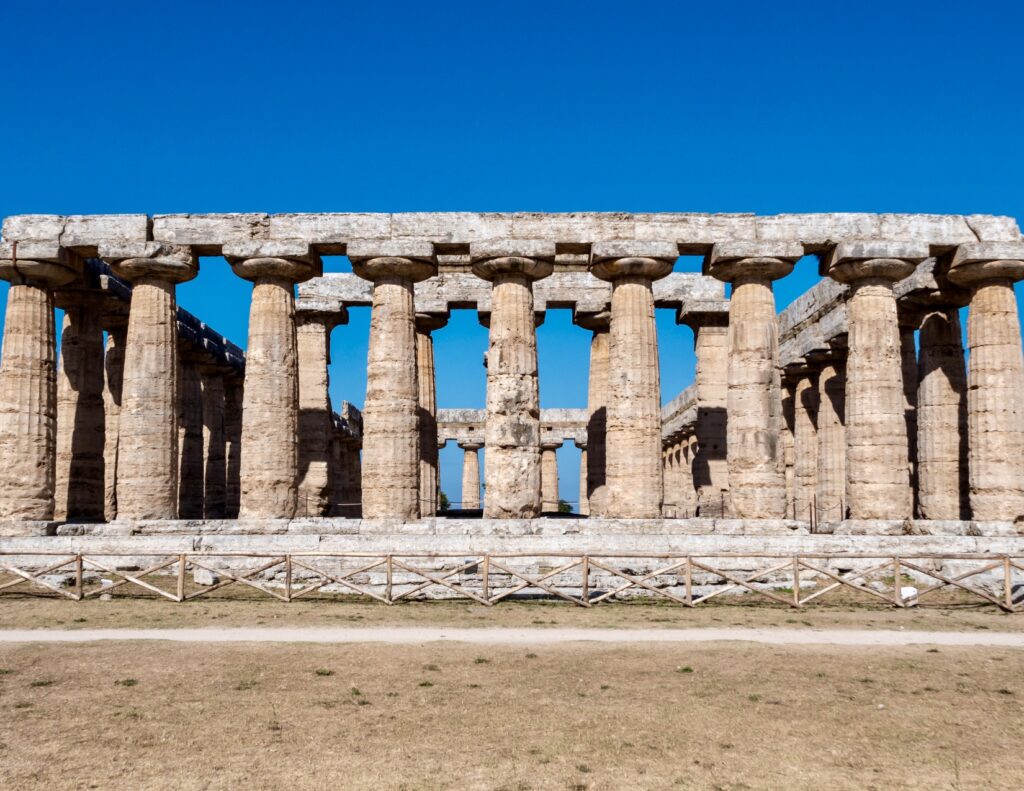
You can check times and book tickets on Trenitalia . Either station is about a 10-15 minute walk to the ruins. The Paestum one is a bit closer.
You also book a train ticket and skip the line ticket for the archaeological site here . You can also book a private transfer to Paestum from the Naples station.
If you would prefer to visit Paestum on a guided tour, that’s an efficient way to visit. Here are some options:
- guided day tour from Naples
- guided day tour from Sorrento
- Paestum & Pompeii tour from Rome
3. How To Get Around Paestum
You can just walk around Paestum. The site is designed to be pedestrian-friendly.
Well-maintained paths lead you through the different areas of the ancient city. They’re a tad uneven, so wear comfortable shoes.
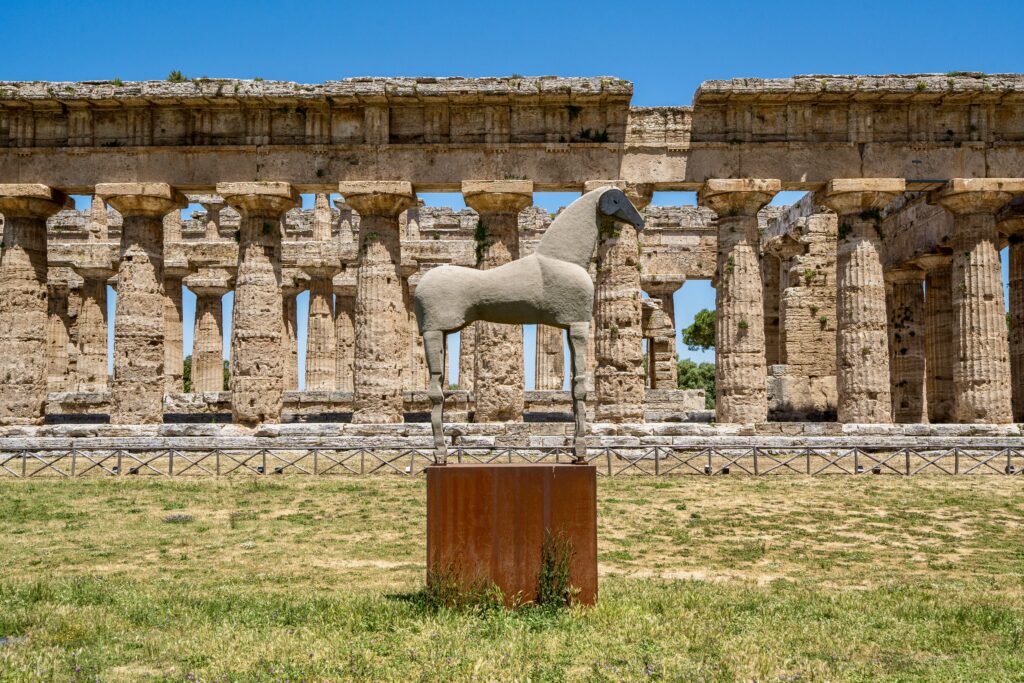
4. When To Visit Paestum
I think the best time to visit Paestum is the spring or fall. It’s less busy then than in the summer. And the scene is especially picturesque with poppies and wildflowers surrounding the ruins.
5. How Long To Spend At Paestum
Most visitors spend about 2-3 hours in Paestum. I would plan to spend at least an hour or so visiting the temples and another hour at the museum. If you have a particular interest in archaeology, perhaps more.
6. Where To Stay in Paestum
Naples makes a good base to explore Paestum. For more information on where to stay, you can check out my 3 days in Naples itinerary .
On the Amalfi Coast, the lovely Palazzo Belmonte has a private beach and is just a 30 minute drive from Paestum.
If you want something close to Paestum, you can check out the Hotel Cerere , Mec Paestum Hotel , and Hotel dei Templi .
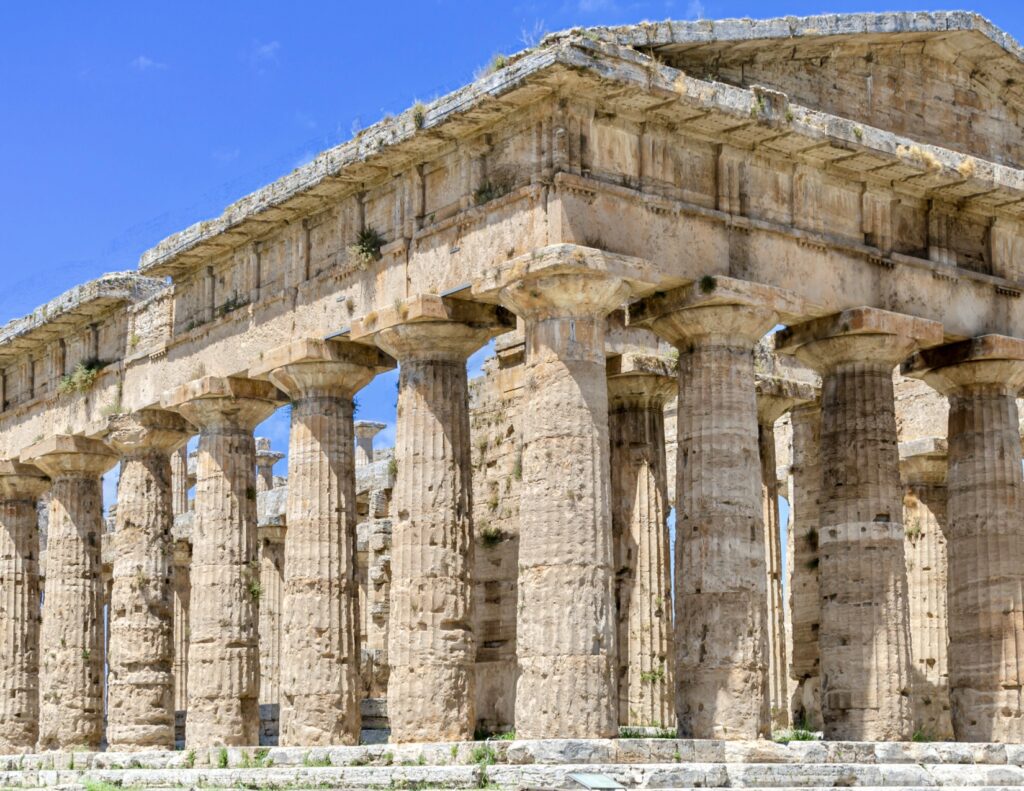
7. Is Paestum Worth Visiting?
If you are a Greek history buff or love archaeological sites (I do!), Paestum is 100% worth visiting. Paestum boasts some of the best preserved Greek ruins in the world, and certainly the best on mainland Italy.
The two things that struck me about Paestum were: (1) the incredible state of preservation of the ruins; and (2) the fact that you could walk inside them. This made the visit super enjoyable for me.
If ruins aren’t your thing, maybe you can skip Paestum. And the downside of visiting the town is that it’s a bit isolated from other attractions.
7. Other Practical Information
Addres s: Via Magna Grecia 913
Hours : Open 8:45 am until one hour before sunset. Last admission 2 hours before sunset.
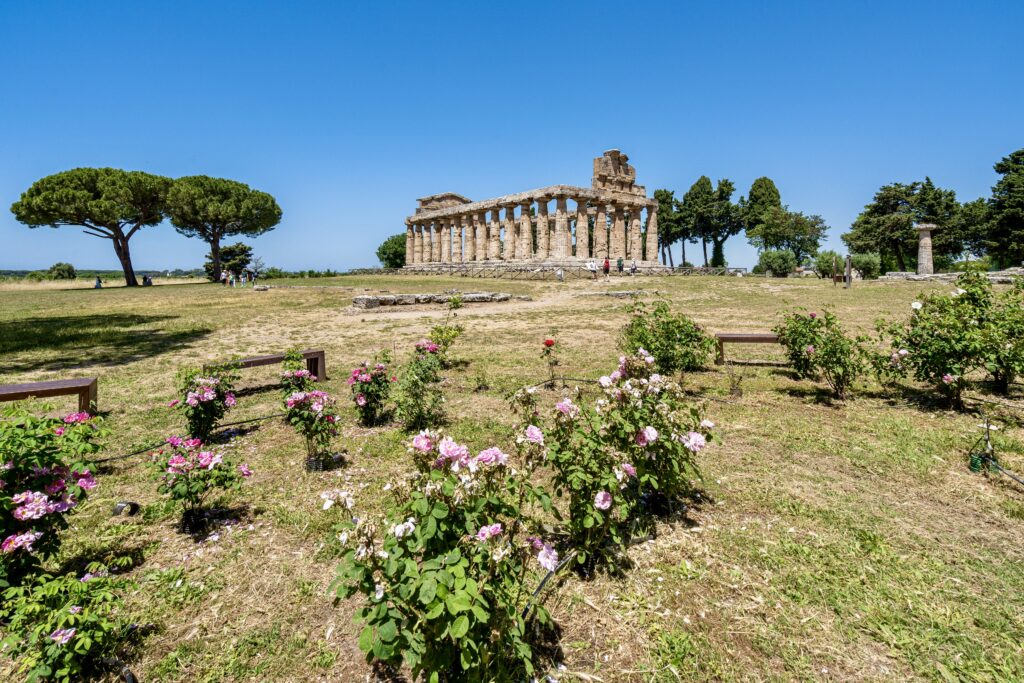
Tickest are 12 euros. In December through February, they are 6 euros.
Click here to pre-book a ticket. You can also visit Paestum with the Artecard . It comes in several versions and offers free entry to many of Campagnia’s attractions.
I hope you’ve enjoyed my guide to Paestum. You may find these other southern Italy travel guides useful:
- 10 Days in Southern Italy Itinerary
- One Week In Puglia Itinerary
- Places To Visit in Puglia
- One Week Amalfi Coast Itinerary
- One Week Rome & Amalfi Itinerary
- 5 Days on the Amalfi Coast
- One Day In Naples Itinerary
- 3 Days In Naples Itinerary
- 2 Days in Matera Itinerary
- 2 Days In Ravello itinerary
- 2 Days In Capri itinerary
- Ultimate Guide To Pompeii
If you need a guide to Paestum, pin it for later.
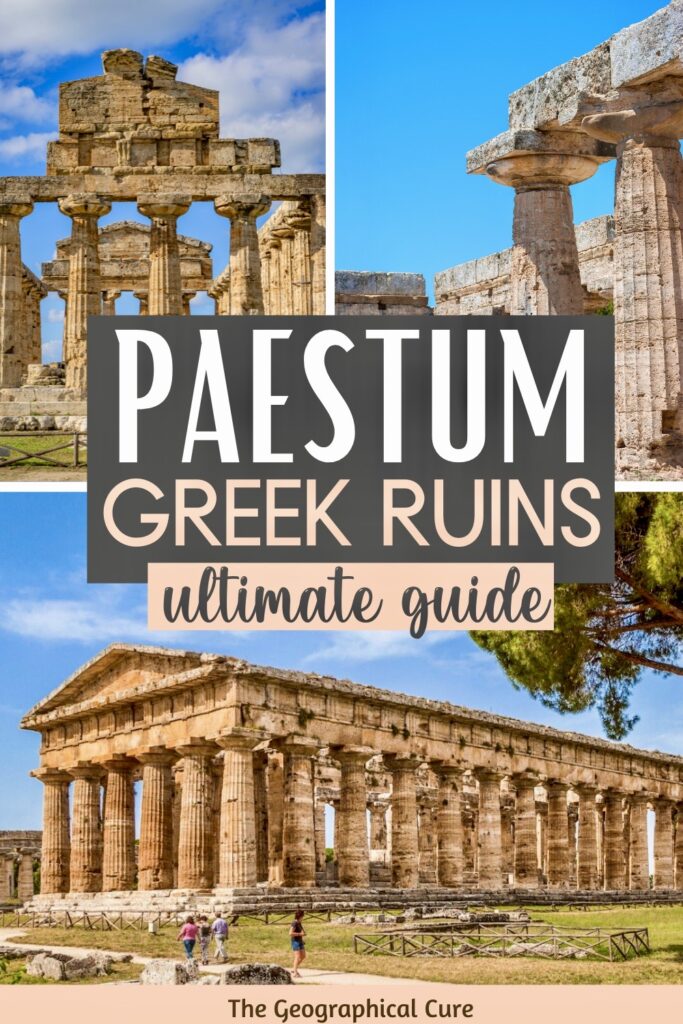
Leave a Comment Cancel reply
Save my name, email, and website in this browser for the next time I comment.
Last Updated on August 15, 2023 by Leslie Livingston
An Italian Mama's Guide to Italy
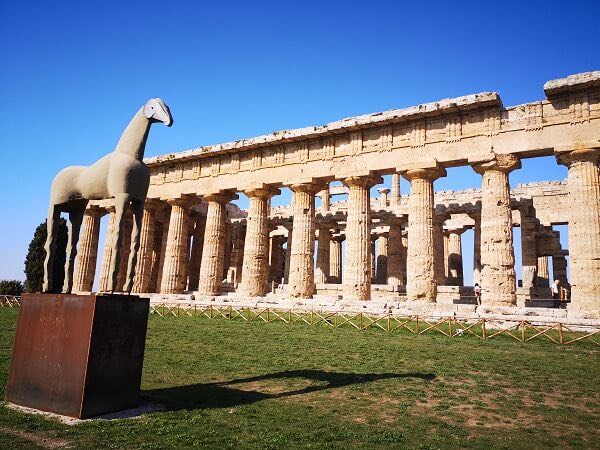
Paestum Italy: all you need to know to visit this overlooked UNESCO site and its breathtaking Greek temples
The ancient Greek city of Paestum is one of the most beautiful yet often overlooked archaeological sites in Italy. This is all you need to know to plan a visit to Peastum, Italy.
If you love history and archaeological sites, then you should make sure to include in your Italy itinerary a visit to the stunning Greek and Roman archaeological site of Paestum.
Located in Campania, less than 1 hour drive South of Salerno, Paestum is home to three Greek temples of outstanding beauty and to a beautiful museums with unique burial paintings from the V century BC.
The site entered UNESCO’s list of World Heritage Sites in 1998 and it is one of the most beautiful archaeological sites in the country and one of the best to see Greek ruins in the South of Italy.
Despite its importance and beauty, the site is largely overlooked by international tourism, probably due to its position, slightly off the most beaten track.
I highly recommend you go visit and spend a morning in this gorgeous location: you will never forget it!
You can learn how to include Paestum in your Southern Italy itinerary here
A brief history or Paestum, Italy
Paestum is an ancient Greek city originally built in this location by Greek colonies from, probably, the city of Sibaris, in the VII century BC.
Its original name seems to have been Poseidonia, a name that highlighted to special connection with the God of the Sea Poseidon, and seems to have changed name to Paistom and then Paestum respectively when taken over by the Lucanians first and the Romans next.
Poseidonia / Paestum went though a long period of prosperity and many of the ruins we see today date back to those years of wealth and power, which archaeologists place between 560 a.C. al 440 a.C. (Greek times) and then later 273 BC – 270 AD (Roman times).
Paestum seems to have become Christian relatively early and seems to have been home to Christian Bishops since the V century.
The town however fell into disgrace and was largely abandoned from the VIII century AD, when the area partially returned to be an unwelcoming swamp.
In the XVIII century the Greek city seems to have returned to some form of notoriety and eventually even entered the itinerary of the Grand Tour which mean it gained popularity among a certain section of European society.
Nowadays, the temples and the city are an archaeological park with attached an interesting museum and a wonderful place to learn about the history of this area and how different civilizations left their mark.
What to see in Paestum
Paestum is an open air archaeological site and museum, with ancient ruins of three Greek temples, houses, ancient city piazzas and artifacts.
The most impressive things to see in Paestum I believe are the three Greek temples and the museum.
The three Greek temples
The city of Paestum has three Greek temples in a stunning state of conservation.
Made of cream colored stone, they stand tall in the middle of what are now green lawns and are a vision of might and beauty against the backdrop of the Southern Italian blue sky and the frame of tall umbrella pines that surround them.
The temples are different one from the other but they are all in Doric style and where devoted to different deities, the attribution to which seems to have stumped historians in the past.
The temples are visible one from the other, two of which facing each other, and they are impressive both as a whole and individually.
The temple of Neptune
The temple of Neptune in Paestum dates back to the V century a.C. and is a sight to behold.

It has three naves and is entirely surrounded by Doric columns made of golden-colored travertine.
The columns are large and heavy but they are decorated with splendid vertical grooves: they capture the light as it hits the columns and create a wonderful game of shades that make this massive stone creation look as if it was feather-light.
You feel small inside it but the sun streaming in from the open roof also makes you feel part of this magnificent creation: it is really easy to see why this was a religious building, the effect on the visitor is truly powerful!
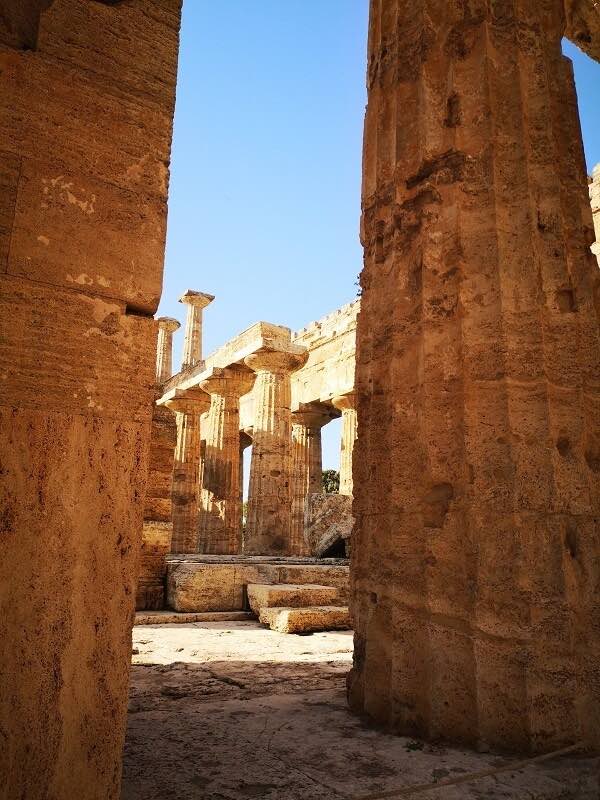
The temples of Neptune is said to be the best-preserved temple in the Greek world and is also unique.
The double order of columns that divide the tree naves of the temple is unseen in the Western Greek world and makes this temple the only example of this type of architecture in Magna Graecia .
This structure also connects this temple with the much more famous yet less preserved great temple of Zeus in Olympia, in mainland Greece.
The Basilica
Beside the temple sits another building, smaller yet somewhat similar, often referred to as ‘the basilica’.
It got this name in the XVIII century, when archaeologists thought this was an administrative type of building however, archaeologists now believe it was original a temple to Hera and / or Zeus.
It dates back to 530 a.C and had, inside, several religious artifacts now preserved in the local museum.
The basilica is stunning: it is in excellent state of preservation and has some special traits that make it stand out.
One is the odd number of columns at its front and the other is the peculiar shape of the columns itself, narrower at the top, two architectural elements that give away the archaic origin of the building.
The temples of Athena or Temple of Ceres
A little detached from the two other temples lies another religious building identified as the temple of Athena or Ceres.
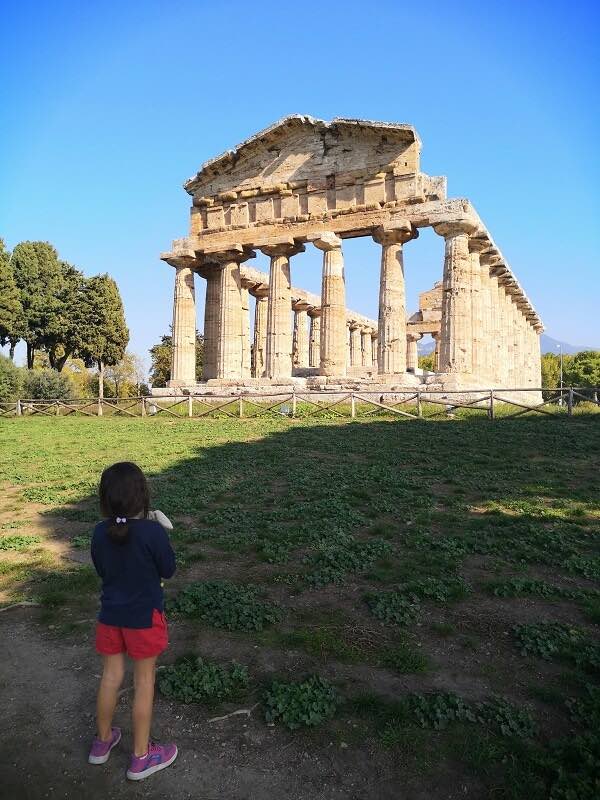
This is a wonderful Doric temple and likely the first you encounter when entering the park: the temple is framed by pine trees and flowers is a little detached from the other two, which you can however easily see and reach from here.
The temples seems to have been built after the basilica but before the temple of Neptune and has some peculiarities that make it unique: its plan is simpler than that of the other two temples and its pediment is also unique because of its Doric decoration.
Paestum’s Archaeological Museum
Immediately outside the precinct with the temples, you find the beautiful and well kept Paestum Museum, which holds several ruins and artifacts from the temples / city area and additional finds from the area.
The most famous of all are the incredible burial paintings knows as ‘diver’s tomb’ or ‘t omba del tuffatore ‘ in Italian.
The tomb of the divers dates back to the V century BC and it is a rare example of Greek embellishment of a burial space.
This is an exquisite painting of a diver taking a symbolic dip into the world of the dead and also has depictions of colorful symposium / banqueting scenes.
The tomb is unique and worth seeing, and complement spectacularly the beauty of the temples just in front.
Practical tips for visiting Paestum, Italy
Paestum is best reached by car. Its locality is called Capaccio, which is a small nondescript town in Southern Campania.
The drive here is easy and once you get to the temples you find shops, restaurants, parking lots and facilities for tourists.
To visit the park I recommend you wear good walking shoes or walking sandals.
The terrain is not particularly challenging or difficult and it is vastly flat however, this is an archaeological site so uneven terrain and grassy and dirt patches are the norm.
The site can be visited in a couple of hours and it is possible to have lunch just outside with view over the temples.
Opening hours: 9:00 am to 7:30 pm [last entrance 6:45 pm] from Monday to Sunday. Please note that the museum is closed on Mondays. 2020 rules and regulations may affect this hours.
Paestum entry ticket prices:
from December to February
- Full price : € 6 .
- Reduced (from 18 to 25 years): € 2.
- Family (2 adults + one or more children and young people up to 25 years): € 10.
from March to November
- Full price : € 12 .
- Family (2 adults + one or more children and young people up to 25 years): € 20.
Visiting Paestum with kids
Paestum is one of my favorite archaeological sites in Italy to visit with kids . It is rather contained in size, therefore not overwhelming, and it has a lot of open spaces that are good for kids to run and explore in their own time.
The temples are fun for them to visit and there are simple enough information panels that, with the aid of an adult, can help them make sense of what they see.
The presence of the restaurants and cafe make this an easy place to visit in terms of logistics too and the car park is literally just in front of the temples.
I recommend you bring al all terrain stroller or do without for the duration of the visit.
Organized tours and day trip to Paestum
We visited Paestum on our own and I believe if you have a car, the information available on site and at the museum are sufficient to enjoy your day and learn about the place.
If you don’t have a car or want to learn more about this site, there are day trips and day tours available.
You can check out the following (please note: these are affiliate links and, should you make a purchase though them, we might make a small commission at no extra cost to you. The links lead you to GetYourGuide, our favorite ticket and booking platform)
- 2h Temple and Archaeological museum of Paestum guided tour
- Paestum Temples and Museum Tour with guide
- Paestum and mozzarella farm tour from Naples (indeed, this is mozzarella di bufala land!)
- Paestum and buffalo farm day tour from Sorrento
What to see near Paestum
Paestum is less than an hour South of Salerno, the getaway town to the Amalfi Coast and can be easily reached by car from there.
We drove here from Matera and the drive took approximately 2.5 hours, on easy roads.
If you want to have a dip in the sea, the town of Agropoli and the pretty beach of Trentova are a very short drive from the temples.
I hope you enjoyed this quick overview and tips for visiting Paestum Italy and it inspired you to go! Safe travel planning.
Marta Correale
Marta Correale is an Italian mama of two. Born and raised in Rome, Marta has a passion for travel and especially enjoys showing off Italy to her kids, who are growing up to love it as much as she does! A classics graduate from the University of Rome, Marta channeled her passion for culture and travel into the creation of family travel websites that inspire, support and help curious visitors to make the most of a trip to Italy and learn about Italian culture on the way. Marta also manages the thriving online community of parents 'Italy with kids' who turn to her for expert advice and competent Italy travel planning support. She is the author of the travel guides 'Best of Rome with kids' and 'Best of Florence with kids' available on Amazon and of an array of kids printables (scavenger hunts, info booklets etc) available on her Etsy shop 'Mama Loves To Print'

You May Also Like
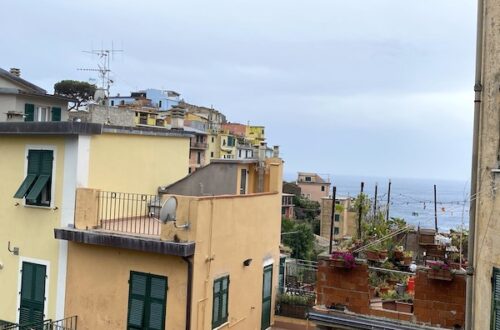
Corniglia: why you will love Cinque Terre’s quietest town (travel guide)

Bolgheri, Tuscany: the pretty village of Nobel prize fame you will love

Locorotondo, Puglia: why you will love this delightful white town in the heart of the Italian South
Privacy overview.
- Temple of Hera
- Plan Your Visit
Plan Your Visit Paestum | Visitor Information, Best Time to Visit & More
Archaeological park of paestum | visitor information at a glance.

What is the Archaeological Park of Paestum opening hours?
The Archaeological Park of Paestum is open on all days from 8:30 AM to 7:30 PM.
Where is the Archaeological Park of Paestum located?
The Archaeological Park of Paestum is in Via Magna Graecia, 919, 84047 Capaccio SA, Italy. Find on Map
How many entrances does Paestum Park have?
The Paestum Park has four main entrances: Porta Aurea to the north, Porta Sirena to the east, Porta Giustizia to the south, and Porta Marina to the west.
What is the Archaeological Park of Paestum Opening Hours?
Monday to Sunday : 8:30 AM to 7:30 PM during the summer months (April - June), 8:30 AM and to 5:00 PM in the winter season (November to March).
Last Entry: 6:50 PM from April to June, 4 PM from October to March
Closure: The Archaeological Park remains closed on 25 December and 1 January.
NOTE: The Paestum Museum is open from 8:30 AM to 1:40 PM on the 1st and 3rd Monday of every month, and the last entry time is at 1 PM.
Where is the Archaeological Park of Paestum Located?
Address: Via Magna Graecia, 919, 84047 Capaccio SA, Italy
Find on Map
The Archaeological Park of Paestum is located in the town of Paestum. It is approximately 85 kilometers (53 miles) southeast of Naples and about 35 kilometers (22 miles) south of Salerno.
Getting to the Archaeological Park in Paestum


By Public Transportation
By Bus : CSTP regularly serves Paestum from Napoli and Salerno (both line 34). SITA and Autolinee Giuliano Bus have several lines between Naples, Salerno, and the Cilento, making stops in Paestum (lines 3, 4, 5, 6, 7, and 10).
By Train: Several trains from Naples and Salerno stop at Paestum station. The archaeological area is only a 10-minute walk from the station.

If you decide to drive to Paestum, take motorway A3 Salerno - Reggio Calabria. If you’re coming from the north, take the exit gate of Battipagli. If you’re coming from the south take gate Eboli, following the trunk road SS 18, take the first exit Capaccio Scalo and keep driving until you reach via Laura at Paestum.
Parking Facilities
Here are a few paid parking spaces nearby:
- Parking Paestum Archeologico Park : Located 750 m away
- Parcheggio Bus Paestum : Located 650 m away
- Parcheggio Principale Comunale Zona Archeologica Paestum : Located 600 m away
Book Tickets to Archaeological Park of Paestum
Know before you go to archaeological park of paestum.

Plan your trip in advance : Tickets to the Archaeological Park of Paestum sell out pretty quickly in the peak seasons (April to June). So, it is recommended to purchase skip-the-line tickets in advance, so you don't need to stand in long queues at the venue.
Opt for a guided tour : BY taking a guided tour, you can skip the long lines at the entry and straightaway visit Paestum Park with an expert guide, who can take you through the highlights of this historical place, and answer any queries you may have.
Visit the venue early : The Archaeological Park of Paestum opens at 7:30 AM, the time when you can expect a few tourists. Arrive early and enter the park shortly after the opening hours.

There are four entrances that can be used to enter the archaeological park:
- Northern entrance : Porta Aurea
- Eastern entrance : Porta Sirena
- Southern entrance : Porta Giustizia
- Western entrance : Porta Marina

- Cloakrooms: Cloakrooms are available at the ticket office of Porta Principale where visitors can deposit backpacks, bags, and luggage.
- Audio guides (dedicated headsets) : These are available on purchasing tickets to visit Paestum. These provide detailed information about the various attractions within the Paestum archaeological site.

- Exploring the Paestum archaeological site demands moderate fitness to navigate the bumpy paths.
- Due to uneven terrain, a person with a disability can face difficulties navigating the pathways.
- Bringing prams isn't advisable since the rough terrain isn't suitable for its mobility.
- Audio guides are available at the venue and also come with specific tickets .

- Try to avoid carrying bulky backpacks and luggage.
- Navigating around the Paestum archaeological site isn’t a breeze, so wear comfortable shoes
- Wear loose-fitting clothing as it can get warm in the daytime
- Wear hats and sunglasses
- Do not litter around the historic place (a UNESCO World Heritage site)
- Do not forget to keep yourself hydrated
- Carry photography gear when you visit Paestum

- La Bottega del Gusto : Traditional Italian cuisine paired with aged wine from local vineyards, 600 m away
- Ristorante Museo : A stone's throw distance from the Paestum site, this quick grab & bite joint is a hit among tourists, 550m away
- Il Tempio Del Panino: A takeaway favorite, find continental dishes at an affordable pocket pinch, 550 m away
- Domus Clelia : Savor classic Italian pizzas, and quench your thirst at wine lounge, 650 m away
- Antiche Mura Grill & Wine : Delicious grilled seafood fare paired with wine, 1 km away

Hotel Dei Templi, 4 min away; Villa Paestum, 4 min away
Hotel Royal Paestum, 9 min away; Grand Hotel Paestum, 6 min away
Hotel Ariston Paestum 8 min away; Oleandri Resort Paestum, 6 min away

- Buffalo Mozzarella Farms : Campania region is famous for its Buffalo Mozzarella cheese. Several farms nearby offer tours where visitors can see the cheese-making process.
- Museum of the Sea: Located in nearby Agropoli, this museum showcases the history and archaeology of the Mediterranean Sea.
- Castellabate : A medieval town situated on a hilltop, offering panoramic views of the Tyrrhenian Sea.
- The Certosa di Padula : Also known as the Charterhouse of St. Lawrence, it's one of the largest monasteries in Italy, noted for its Baroque staircase and large library.
Frequently Asked Questions About Visiting Paestum
The Paestum opening hours start from 8:30 AM and close at 7:30 PM during the summer months (April to June), the last admission is 6:50 PM. In the winter season (October to March), the park opens at 8:30 AM and closes at 5:00 PM.
The Archaeological Park of Paestum is often less crowded during weekdays, especially in the early mornings. To explore the Paestum ruins in a more tranquil setting, consider visiting the venue shortly after opening hours or during the low seasons.
Depending on what you want to explore, level of interest, and at what pace, the archaeological site can be covered anywhere between 2 to 8 hours.
Yes, you can take breaks, enjoy the surrounding landscapes, dine at local eateries, and once again visit the site.
The location of the Archaeological Park of Paestum is Via Magna Graecia, 919, 84047 Capaccio SA, Italy.
The best and most economical way to visit Paestum is to take a Trenitalia from Salerno to Paestum which takes just about 35 min. You can also board a Trenitalia from Naples and reach Paestum in almost an hour.
There are four main entrances: Porta Aurea to the north, Porta Sirena to the east, Porta Giustizia to the south, and Porta Marina to the west.
Due to the ancient and uneven terrain of the Paestum archaeological site, it is not wheelchair accessible.
As of why, audio guides are available for visitors with visual impairment. For person with restricted mobility, unfortunately no wheelchairs/strollers are available at the venue.
There's no specific dress code for the park, although, visitors are advised to dress comfortably for walking and weather conditions.
It is not advisable to bring prams to the Paestum Park, due to its rough terrain and uneven pathways.
Yes, photography for personal use is allowed. So, don’t forget to pack your photography gear.
Yes, cloakroom facility is available at the venue. Visitors can keep their heavy luggage at the cloakroom and enter the archaeological park with only the bare essentials.
Unfortunately, no strollers/wheelchairs are available at the park. This is mainly due to the uneven terrain of the archaeological site.
No, visitors are not allowed to bring any outside food and drinks in the archaeological site.
Paestum tickets can be purchased online in advance. You can also buy entry tickets at the venue, however, buying it online helps to avoid potential queues.
A single ticket to the Paestum Park & Museum costs €12 (from March to November) and €6 (from December to February). However, for special access tickets like skip-the-line entry, it will cost you €49. With this, you can bypass the long queues at the entry and also, get a guided tour.

Opening Hours

Getting There


Exploring the Top Attractions of Paestum: A Visitor's Guide
Written by Barbara Radcliffe Rogers Updated Dec 25, 2023
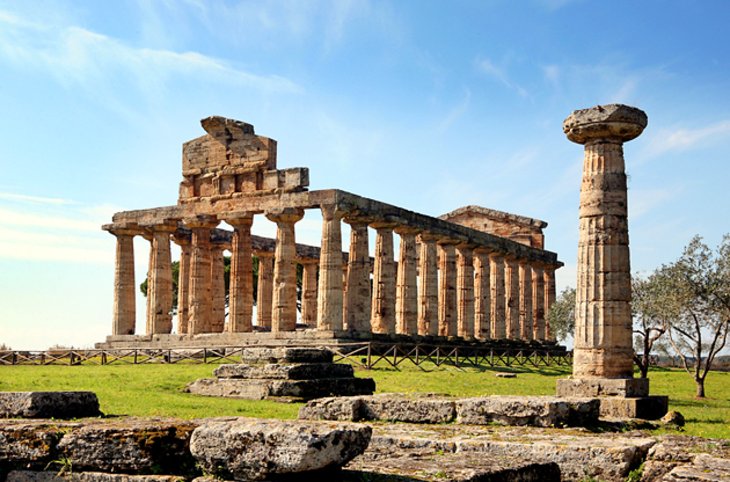
The plain near the Gulf of Salerno, part of the Tyrrhenian Sea, proved a poor site for the substantial settlement founded by Greeks around 600 BCE , surrounded as it was by malarial marshlands. But despite malaria, it survived for two centuries and then as a Roman city for 1,000 years more.
It wasn't until the region was devastated by the Saracens in the ninth century that its inhabitants abandoned the town, taking with them a relic of St. Matthew, which tradition held to have been in Paestum since the fourth century. They founded a new settlement on the neighboring hills at Capaccio, leaving behind temples and buildings that were pillaged 200 years later by Norman conquerors to use in building, among other things, the cathedral in Salerno.
Yet for all this abandonment and pillage, the ruined temples and cemeteries of Paestum comprise the finest remains of Greek architecture on the mainland of Italy . In combination with the adjacent Cilento National Park and the Roman resort of Velia, built on the now excavated earlier Greek settlement of Elia, the area has been named a UNESCO World Heritage site , making this a must-see for any tourist interested in historical attractions.
On This Page:
Paestum archaeological site, national archeological museum of paestum, cemeteries and tomb paintings, amphitheater, velia (elea).
- Where to Stay in Paestum for Sightseeing
Tips & Tours: How to Make the Most of Your Visit to Paestum
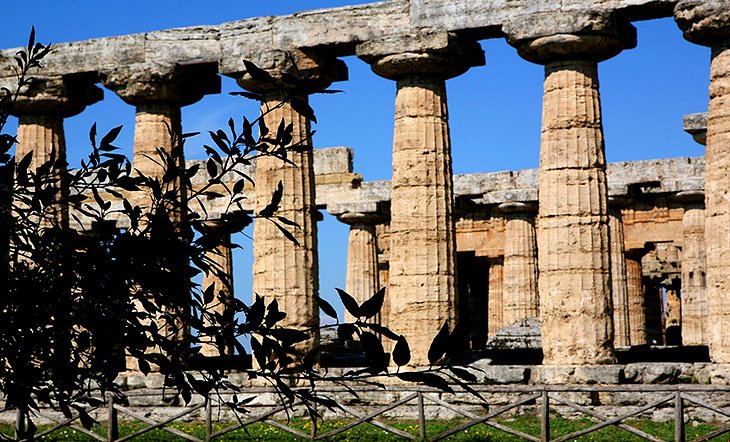
The temples and ruins at Paestum are excellent examples of ancient Greek architecture, built of limestone that has weathered to a yellow tone. The site is in three distinct areas, two sacred areas with temples and between them, the public space and buildings that were originally the agora under the Greeks and later became the forum.
You can still see a section of the ancient Via Sacra, which ran north/south across Paestum. Opposite the entrance is the magnificent Temple of Hera (also called the Temple of Neptune), an outstanding example of the strictly disciplined architecture of the fifth century BC, reflecting the Greek ideal of harmony and proportion. At the east end of the temple, you can see the tip of an earlier oval structure, and to the east are remains of the sacrificial altar.
The oldest temple, misnamed the Basilica can be dated to the late sixth century BC by the noticeable swelling of the columns and by the form of the capitals. Here, too, are the remains of an earlier oval temple and an altar. North of the Temple of Hera is the forum , which was surrounded by a colonnade of late Doric columns.
On the north are the massive substructures of the Tempio Italico (273 BC), with one column re-erected. On the so-called Temple of Ceres, you can see traces of stucco and painting on the gable, which shows Ionic influences.
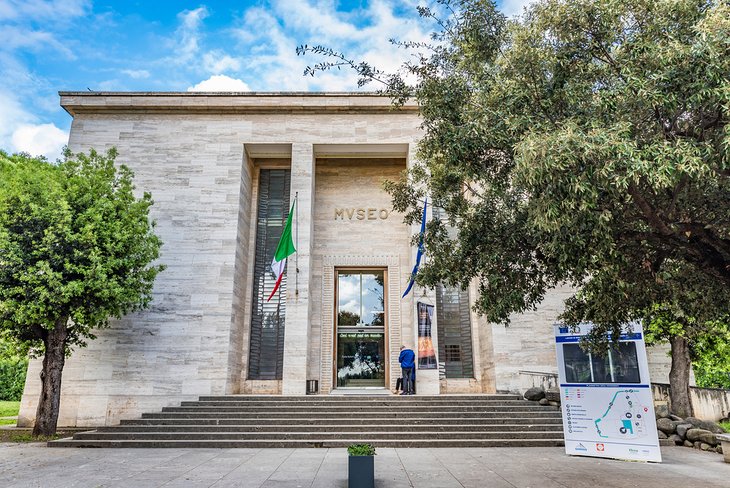
Although it contains some finds from Paestum, what makes this one of Italy's most outstanding archaeological museums is its collection of finds from the sixth-century Temple of Hera at the mouth of the River Sele. Older than anything at Paestum itself, this temple was demolished, and its marble burned for lime in the Middle Ages.
Twentieth-century excavations have unearthed a remarkable collection of Metopes, deep relief carved limestone panels that formed a frieze at the top of the treasury, which has been reconstructed inside the museum.
Climb to the viewing platform to see these, especially the most famous showing Hercules carrying the Kerkopes in a pole. Also outstanding are the tomb paintings found in the nearby necropoli, as well as Greek statues and one of the finest collections of prehistoric pottery from the Neolithic, Bronze, and Iron ages.
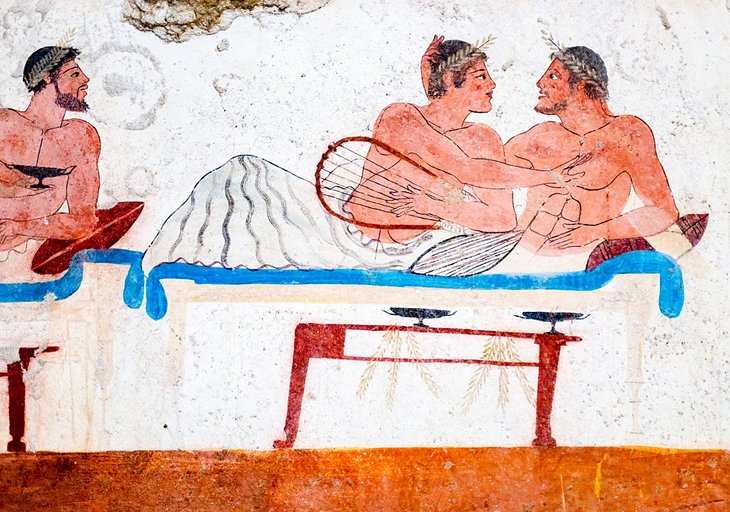
Outside the town walls of Paestum, three large cemeteries with excellent tomb paintings have been discovered since 1968. To the north are 70 tombs dating from the fourth century, painted in vivid colors with scenes from everyday life, which throw fresh light on the discovery of color, light, and shade, and spatial representation in Western art.
On the west side, a large cemetery was found, with thousands of third-century tombs painted in a style that shows how much of southern Italy still belonged to the Greek cultural sphere even during the Roman period.
On the south side are tombs of the fifth century BC, at the height of the Greek period, with frescoes in the style of the classical vase-painters. Many of the paintings from these have been moved to the museum to protect them. Altogether more than 500 tomb paintings have been discovered so far.
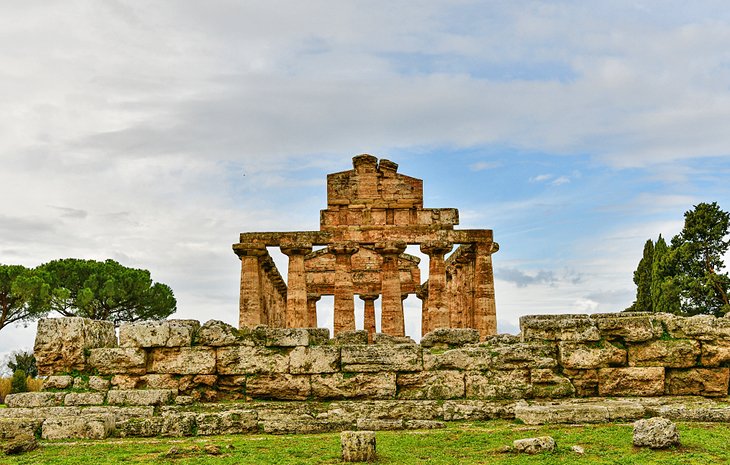
The site of the ancient city of Paestum is enclosed by a magnificent circuit of town walls, built in the fourth and third centuries BC. Four gates–one at each of the cardinal points–and a number of towers punctuate the 4.75-kilometer length of the walls. If you have time, walk around them to admire excellent views of the site and the sea.
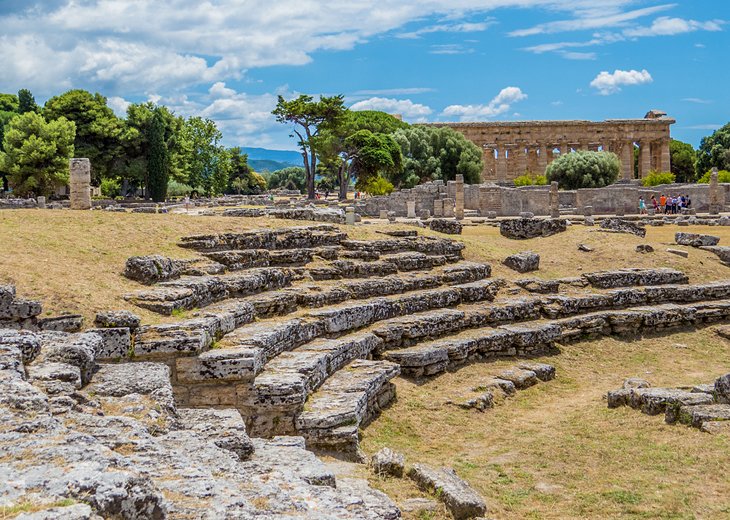
Immediately south of the museum in Paestum is an amphitheater from the Roman period, between about 50 BCE and 50 CE, when the outer ring was added to increase seating. Although about half of it was destroyed by a road built across one end of it in 1930, the rounded end and entrance gate are easy to distinguish.
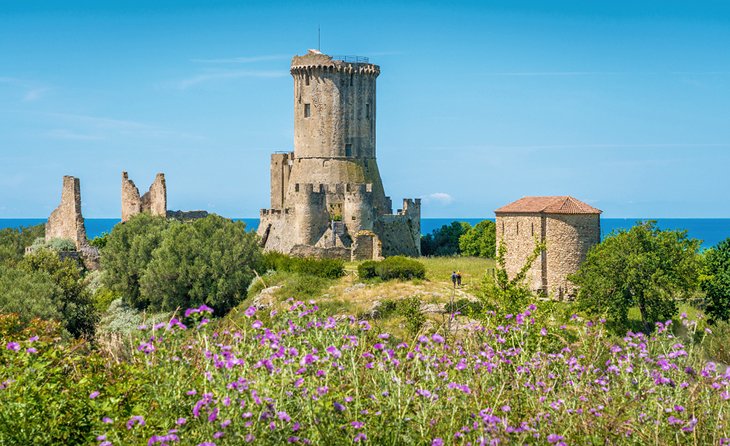
Not far south of Paestum is the interesting Velia, once a popular resort of the Roman aristocracy, where you can see the remains of several villas and town gates. But even more interesting is what archaeologists have found about five meters below the Roman resort.
An earlier Greek town founded in 536 BC by Phoenicians has yielded some fine pieces of statuary and the fourth-century BC Porta Rosa , a masterpiece of Greek architecture. Between 540 and 460 BC, Elea had a population of 40,000 and was the home of the famous Eleatic school of philosophy, as well as a noted school of medicine.
Excavation of the ancient city is still in progress, and finds are displayed in various buildings. On a hill to the north, excavations have revealed foundations of a fifth-century BC temple destroyed during the construction of the medieval castle, along with remains of three smaller temples, a sacrificial altar, baths, several second-century BC houses, and a square tower from the fourth century BC.
- Guided Tour: For a deeper understanding of the temples and their history, you can book a private tour, led by a certified archeological guide. The exploration of the temples and museum typically includes background on the people who lived here and their lives, as well as insights into their art and civilization.
- Visiting Paestum with Kids: For children old enough to have studied even a little of world history, Paestum is like stepping back inside ancient Greece. The towering temples fascinate them, and the explanatory panels are easy to understand. Because Paestum is relatively small and uncrowded, with open-air attractions that you can tour at your own pace, it is not overwhelming for young visitors. Be sure they (and you) are wearing sturdy shoes, as although it is relatively flat, the terrain is uneven (strollers are difficult to use here). Best of all, the family admission rate for two adults and one or more children is cheaper than the price for two adults.
More Related Articles on PlanetWare.com
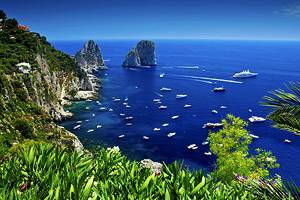
Where to Go from Paestum : If you are looking for more things to do in the area, the attractions of the Amalfi Coast are just a short drive away, and the lovely town of Sorrento makes a good base for seeing these and the lovely island of Capri .
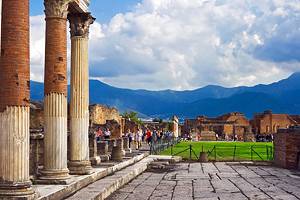
Exploring More Ancient Cities: Also close are the cities destroyed by the eruption of Vesuvius in AD 79, and our pages on Visiting Pompeii and Visiting Herculaneum will guide you to the top sights.

More on Italy


What to do in Paestum Italy’s must-see archaeological site, a little-known nugget
- 12 July 2024
- No Comments

Visit Paestum , one of Italy’s most beautiful ancient sites, and the icing on the cake is that it’s much less crowded than its neighbors Pompeii and Herculaneum.
What is there to see in Paestum? What temples can’t you miss ? We had the same questions as you when preparing our visit, and we’ll answer all your questions.
During our stay in the region, we took advantage of our visit to Naples to visit the archaeological site of Paestum . We spent 1h30 on site, as travelling with a young child meant we had to prepare our visit as well as possible to optimize our time spent there and limit the fatigue of this visit.
We’ve put together all the information you need to organize your visit to the site. You can use our table of contents to navigate through the article and find the information you’re looking for.

Why visit the archaeological site of Paestum: our opinion
Temple of hera, temple of poseidon, temple of athena, paestum museum, practical tips for your visit: tickets…, map of paestum near naples, what to do around paestum.
The archaeological site of Paestum is a UNESCO World Heritage Site, representing the largest group of preserved Greek temples outside Greece.
What makes Paestum even more remarkable is its state of preservation , which is particularly impressive. And the advantage of Paestum is that, unlike more famous archaeological sites such as Pompeii or Herculaneum , it’s located a little further from Naples and therefore attracts fewer visitors.

It’s a site that deserves to be better known , we were so close to missing it that we went there, because we exchanged with travelers used to visiting Naples and its region , who told us it was their favorite site in the area. This lesser affluence makes Paestum a hidden gem , offering a quieter, more intimate experience.

What temples are worth seeing in Paestum?
When we entered the Paestum archaeological site , we were instantly transported to another era. Founded by the Greeks in the 7th century BC , this ancient city, formerly known as Poseidonia , was a flourishing cultural and commercial center.
Paestum’s main attraction is its three imposing Greek temples , all remarkably well-preserved.
- The Temple of Hera , to the south of the site, is the oldest of the 3 temples, majestic and imposing, standing like a guardian of the past. It is also known as the “Basilica”. This temple was dedicated to Hera, Zeus’ wife.

- The Temple of Poseidon , the most recent of the 3 temples, is considered one of the best-preserved examples of Greek architecture in the West. This is the largest of the 3 temples, with 14 columns on each side and 6 columns on the front and back.

- The Temple of Athena or Temple of Ceres , located to the north of the site, dedicated to the goddess Athena, the goddess of war and wisdom.
In addition to the temples, you can stroll through the ancient Greek city and see the remains of the Roman period (amphitheatre, forum…). We explored the site for 1h30.
We were surprised by the size of the archaeological site, and our daughter had no energy left to visit the museum adjoining the site.
The site also boasts a well-stocked museum , with an impressive collection of artifacts discovered on site. Frescoes, sculptures and pottery tell stories of daily life, religion and art from this remote era. It’s a unique opportunity to get up close to the refinement and complexity of the civilization that flourished here.
We’ll keep it for our next visit to Paestum!

- How to get there from Naples or Salerno? Paestum can be reached by car or train from Naples (1.5 hours) or Salerno (45 minutes). Private car transfers are also available from Naples.
- Price of combined site + museum ticket : March to November, full price €15, concessions €2; December to February, full price €10, concessions €2. As with other archaeological sites in the region, the lack of explanatory panels on the site makes it difficult to fully understand the site. We advise you to prepare your visit well in advance, or opt for a 2-hour guided tour in French that you can book online , which is more than enough time to explore the site.
3. Where to sleep?
You can sleep around the site or in Salerno , the nearest town. You can find the best hosting options below:
- Best times to visit: Paestum is most peaceful in the early morning or late afternoon. Not only will you avoid the crowds, but you’ll also benefit from light that’s ideal for photography.
The Paestum area offers a myriad of activities and sites to explore. From archaeological sites to idyllic beaches and picturesque villages, there’s so much to see and do.
- The archaeological sites of Pompeii and Herculaneum
- The natural site of Vesuvius , the volcano of Naples
- The Almafitaine coast
- The city of Naples and its islands, Capri , Ischia and Procida
And don’t forget to sample the local cuisine. Campania is famous for its tasty, authentic cuisine. Crispy pizzas with fresh seafood and mozzarella di Buffala. We stopped to fill up on mozarellas at the Tenuta Vannulo farm just outside Paestum.

Paestum is one of the most surprising places we’ve ever visited. We loved writing this article, which allowed us to immerse ourselves in this extraordinary day. We hope we’ve helped you organize your visit to this exceptional archaeological site.
Feel free to leave us a quick note or 5 stars below, to tell us if you’re planning this trip, to ask any questions you may have, here or on Instagram , we’ll get back to you with great pleasure.
Leave a Reply Cancel reply
This site uses Akismet to reduce spam. Learn how your comment data is processed .

- All our destinations
- Italy: featured destination
- Ireland: featured destination
- USA: featured destination
- Packing Lists
- Buying Guides
- Booking resources
- Work with me
- Cookies and privacy policy, terms of use
Europe Travel Guides
Paestum, italy: the stunning ancient site nobody told you about.

The stunning UNESCO world heritage site of Paestum, Italy, is one of the most beautiful in Europe and the world. In this guide, we share what to see and how to visit its unmissable ruins
Have you ever been to a place so beautiful it knocks the breath out of your chest?
I have and the place that stunned me into this beauty-induced state is Paestum, Italy .
Located in Campania, the region of Naples, Paestum is an archaeological site dating back to ancient Greek times.
Here, cream colored temples raise from a soft carpet of grass and ancient roads criss-cross sleepy fields, what now remains of a once thriving ancient town.
A visit to Paestum is a pleasure for the senses and the intellect.
The temples will fill your eyes with unparalleled beauty and the local museum will quench your thirst for knowledge with interesting and beautiful artifacts.
I have visited Paestum several times, the last of which on the way back from our Southern Italy trip and each time the effect is the same: powerful, awe inspiring and moving.
These are the many reasons to visit Paestum and some tips for the first time visitor.
Table of Contents
Why and how you should visit Paestum, Italy

What is special about Paestum?
Paestum is a site of unique historical value and one of the best places to visit in Italy.
It has a cluster of 3 temples and one of them, the temple of Neptune, is in such a wonderful state of preservation dubbed ‘the most perfect and best preserved temple in Greek architecture’ (A. Maiuri).
Indeed, there is no doubt that a visit to the ruins of Paestum is a unique experience.
The location and colors of the ruins are incredible and the archaeological park is just the right size to make a visit pleasant yet not overwhelming.
On top of this Paestum is also special as it doesn’t see mass tourism (yet!).
Unlike nearby Pompeii, Paestum is still mostly outside the main travel routes in Italy and this means on most days you can have the place all to yourself!
This is truly Italy off the beaten path!
What to see in Paestum
Paestum is an ancient town in the South of Italy, originally built by Greek colonies around the year 600 a.C.
It is now an archaeological park where you can see ancient ruins dating back to Greek and Roman times.
It has several areas of interest but has four things to see that truly are the star of the show: the temple of Neptune, the temple of Hera, the temple of Athena and the museum.
The temple of Neptune
The temple of Neptune in Paestum dates back to the V century a.C. and is a sight to behold.
It has three naves and is entirely surrounded by Doric columns made of golden-colored travertine.
The columns are large and heavy but they are decorated with splendid vertical grooves: they capture the light as it hits the columns and create a wonderful game of shades that make this massive stone creation look as if it was feather-light!

This temple is by far my favorite corner of Paestum: waking into is is like walking inside jungle made of stone colored trees and the presence of not one but two stories of columns make the temple properly imposing!
You feel small inside it but the sun streaming in from the open roof also makes you feel part of this magnificent creation: it is really easy to see why this was a religious building, the effect on the visitor is truly powerful!
The temple of Naptune is however more than just beautiful.
As well as being the best-preserved temple in the Greek world, it has something unique: the double order of columns that divide the tree naves of the temple is unseen in the Western Greek world and makes this temple the only example of this type of architecture in Magna Gracia.
This stucture also connects this temple with the much more famous yet less preserved great temple of Zeus in Olympia, in mainland Greece.
Fun fact : while usually referred to as the Temple of Neptune (or also Temple of Poseidon) it not sure what God the temple was devoted to. In XVII century, historians identifited the temple ans belonging to Poseidon but there are also reason to believe it may have been to Hera, Apollo or possibly even Zeus.
The basilica
Beside the temple sits another building, smaller yet somewhat similar, often referred to as ‘the basilica’
It got this name in the XVIII century, when archaeologists thought this was an administrative type of building however, archaeologists now believe it was original a temple to Hera and / or Zeus.
It dates back to 530 a.C and had, inside, several religious artifacts now preserved in the local museum.
The basilica is stunning: it is in excellent state of preservation and has some special traits that make it stand out.
One is the odd number of columns at its front and the other is the peculiar shape of the columns itself, narrower at the top, things that give away the archaic origin of the building.
The temple of Athena or Temple of Ceres
A little detached from the two other temples lies another religious building identified as the temple of Athena or Ceres.
This is a wonderful Doric temple and likely the first you encounter when entering the park: to get the best view walk to it far side: the temple framed by pine trees and flower is simply stunning!

The Paestum museum
Just outside the area with the main Paestum ruins lies the site’s archaeological museums.
This is a wonderful space and one that complements perfectly a visit to the ruins.
If the temples make you experience the might and physical feel of Paestum ancient city, the museum is where you can truly learn about it and where you can admire the art of the civilizations that called this area home.
Among the things to see out, there are the stunning painted decorations of the local tombs, still flaunting exquisite colors, and many delicately decorated vases and artifacts
The most famous remains of all is the gorgeous slab covering the so called ‘diver’s tomb’: it depicts a man diving into the sea and it is of exquisite beauty!
Where is Paestum and how to get there?
Paestum is in Campania, immediately to the South of Salerno, in the South of Italy.
The best way to reach it is by car: the closest localities are Capaccio Scalo, Battipaglia and Agropoli and the site is well signposted both if coming along the coastal road or the Salerno- Reggio Calabria motorway.
Trains also connect Salerno to Paestum. The train journey takes about 30 minutes and the station is a little less than 1km away from the ruins.

Is Paestum good for kids?
Paestum is a wonderful place to visit with kids!
The main archaeological area is a dream for little children to run around and older kids will be stunned by the beautify of the temples.
Strollers may find it hard to negotiate some of the ancient streets but there are several areas with flat terrain and a carrier is not necessary.
Just outside the site there are several cafes and restaurants with shaded patios and child friendly menu options.
A brief history of Paestum
Paestum was founded by Greek colonists from Sibari around the year 600 a.C., when they escaped their homeland to find refuge in what became known as Magna Graecia ‘.
It developed quickly and soon became a thriving center with a rich and wealthy population we can see glimpses of thanks to the many artifacts from that time.
Around 300 a.C Paestum gets caught into the rapid expansion of Rome and became first colony and then strong ally of the now powerful city.
The Romans contributed to the expansion of the city and are responsible for some of the buildings we now see such as the amphitheater.
In the Christian era Paestum gained its own bishop and thrives until the beginning of the XII century: at this time, Fredrick II occupied the area and Paestum got abandoned, slowly getting swallows by the swap that took over this now neglected area.
The rediscovery of this site peaked in the 1950 when the local museum was opened and with the inclusion in the list of Unesco world heritage site in 1998
I learned about the history of Paestum in the local museum where you can also buy well written booklets about the history of the city, in several languages. The books are by L. del Verme and edited by Artem
Frequently asked questions about visiting Paestum Italy
Yes, Paestum and the Cilento area entered the Unesco list of world heritage sites as outstanding cultural landscape in 1998
Yes! Paestum is one of the most beautiful sites in Italy and one easy to enjoy even if you are not particularly into archaeology or history
You can easily Paestum in a couple of hours. This time allows you to see the ruins but also visit the museum, worth a stop
yes, there is a parking area just outside the park and also on street parking (pay and display)
Paestum is about 300 KM South of Rome and it takes about 3.5h to get there. While technically possible to over this distance in one day, this is not a good day trip from Rome and it is better visited with an overnight stay in the area or en route to another location
Just outside the park you have several restaurants and cafe, one of which also has rooms for the night
You do not need special gear to visit Paestum however, make sure you have good walking shoes and something to protect you from the sun: sun cream and a sun hat are a good bet in all seasons.
I hope you enjoyed this quick overview of this wonderful sight and it inspired you to add Paestum yo your Italy trip.
Safe travels!
Marta Correale
Marta Correale is the creator, writer and creative mind behind Learning Escapes. A travel loving mama of two from Italy, Marta currently lives in Ireland with her husband and two kids, they take frequent trips to European destination, the US and beyond. A professional travel blogger for over a decade, Marta is passionate about traveling with kids and helping others to travel more and better as a family.
Privacy Overview

Home » Europe » Italy » The Ruins of the Paestum Temples
The Ruins of the Paestum Temples
By Author Lance Longwell
Posted on Last updated: October 6, 2022
As we reached the end of the road, the stone wall stood between us and our quest: the Greek ruins of Paestum, Italy. Beyond the wall was a massive temple that looked like it had been transported out of ancient Greece. Our excitement began to grow. We’d traveled a long way for this. The Paestum ruins did not disappoint.
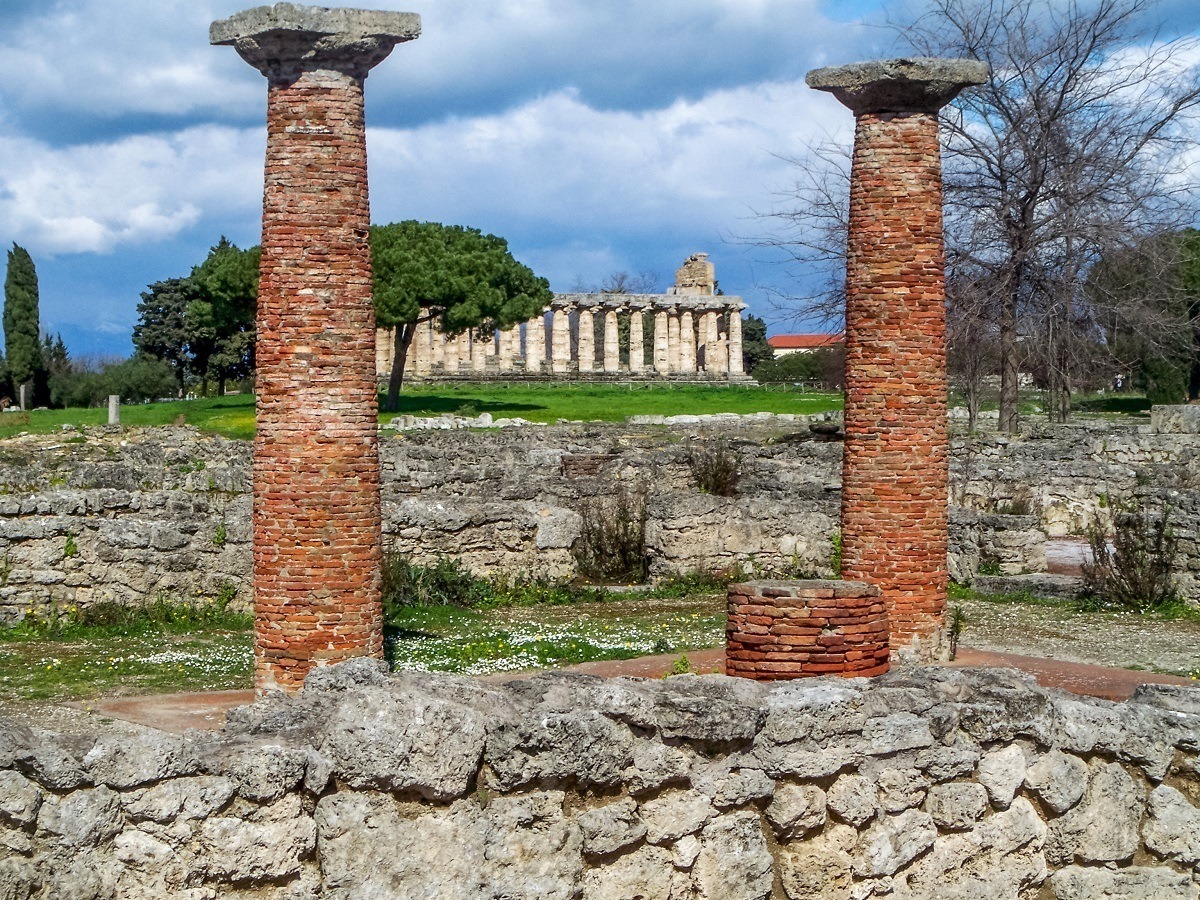
Why did we decide to visit Paestum? Why not? The real answer is that we always try to pack just a little (or a lot) more into a trip. After several days on the Amalfi coast, we needed to do more. In retrospect, that wasn’t a good idea. However, the Greco-Roman ruins of Paestum seemed to fit the bill.
If we realized how challenging this was via public transportation, we probably would have skipped it. But we soldiered on…and had a remarkable experience. We don’t know why the idea of Greek ruins in Italy surprised us, but they did.
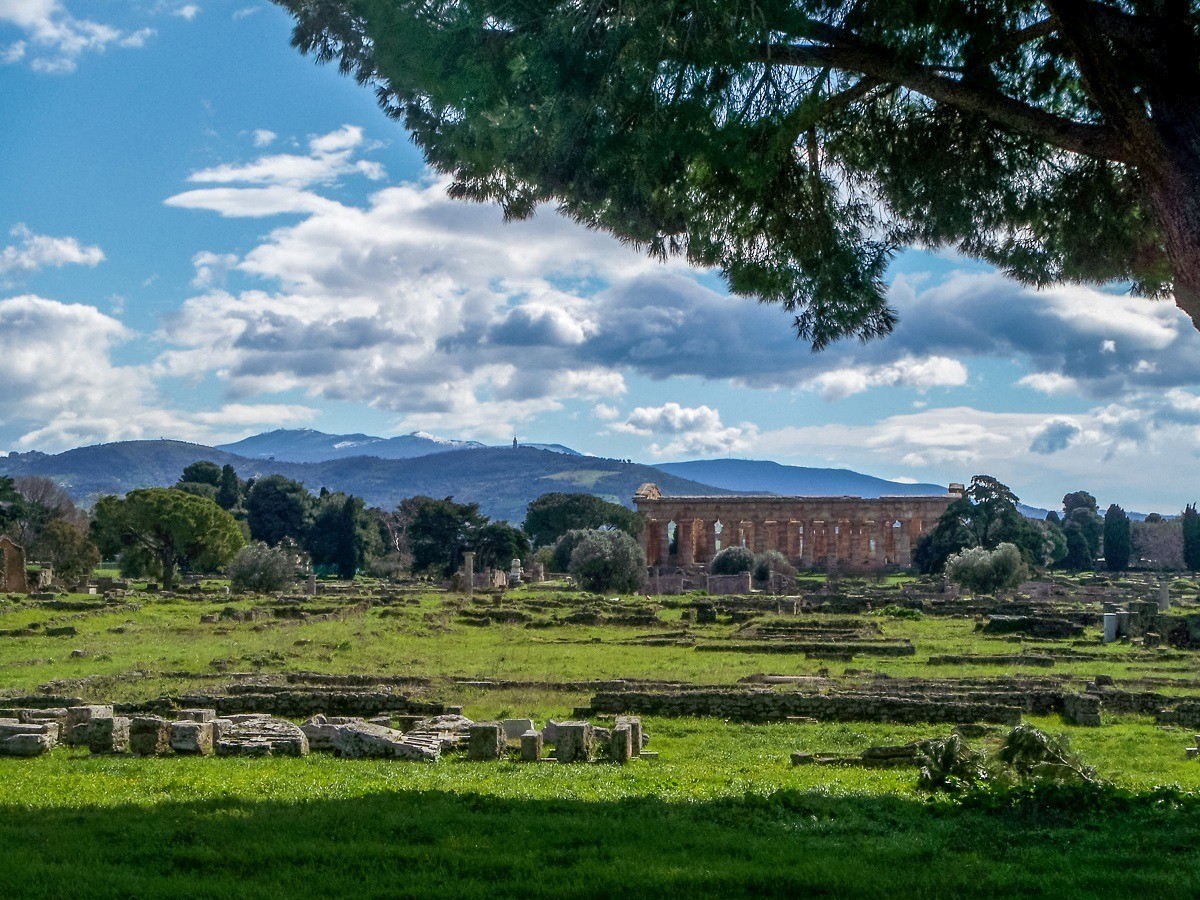
These ruins are comprised of three major Greco-Roman temples and a number of smaller ruins. Some of the ancient Greek temples at Paestum pre-date the Acropolis in Athens, Greece by several hundred years. Most are from the Doric period: 600-400 BC. They are ancient. And they are remarkably well preserved. The entire Paestum Archeological Site is a UNESCO World Heritage Site .
In the heart of the town, we explored the dual Temples of Hera. The open-air Temple of Hera I dating from 550 BC, and the Temple of Hera II dating from about 100 years later. Both are perfect examples of the Greek temple plan with broad Doric Columns.
The second Temple of Hera is remarkably well preserved and looks incredibly pristine. A short distance away is the old Temple of Athena, also an ancient Greek temple dating from around 500 BC.
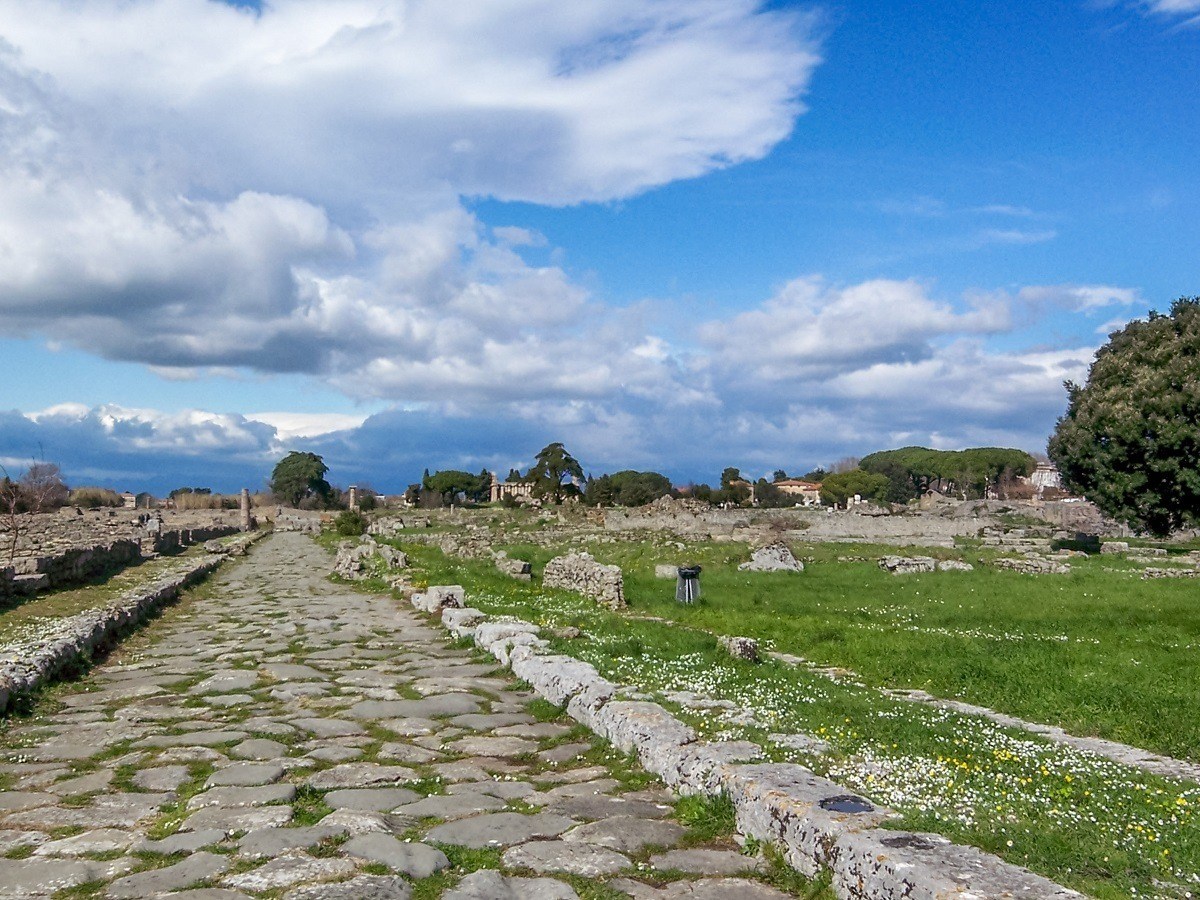
This is one of those sites that you will never forget! We were totally blessed to have the site nearly to ourselves. A couple of German tourists, who were kind enough to take our picture, were the only other souls to be seen. After two and half hours walking around the ruins, we were awe struck.
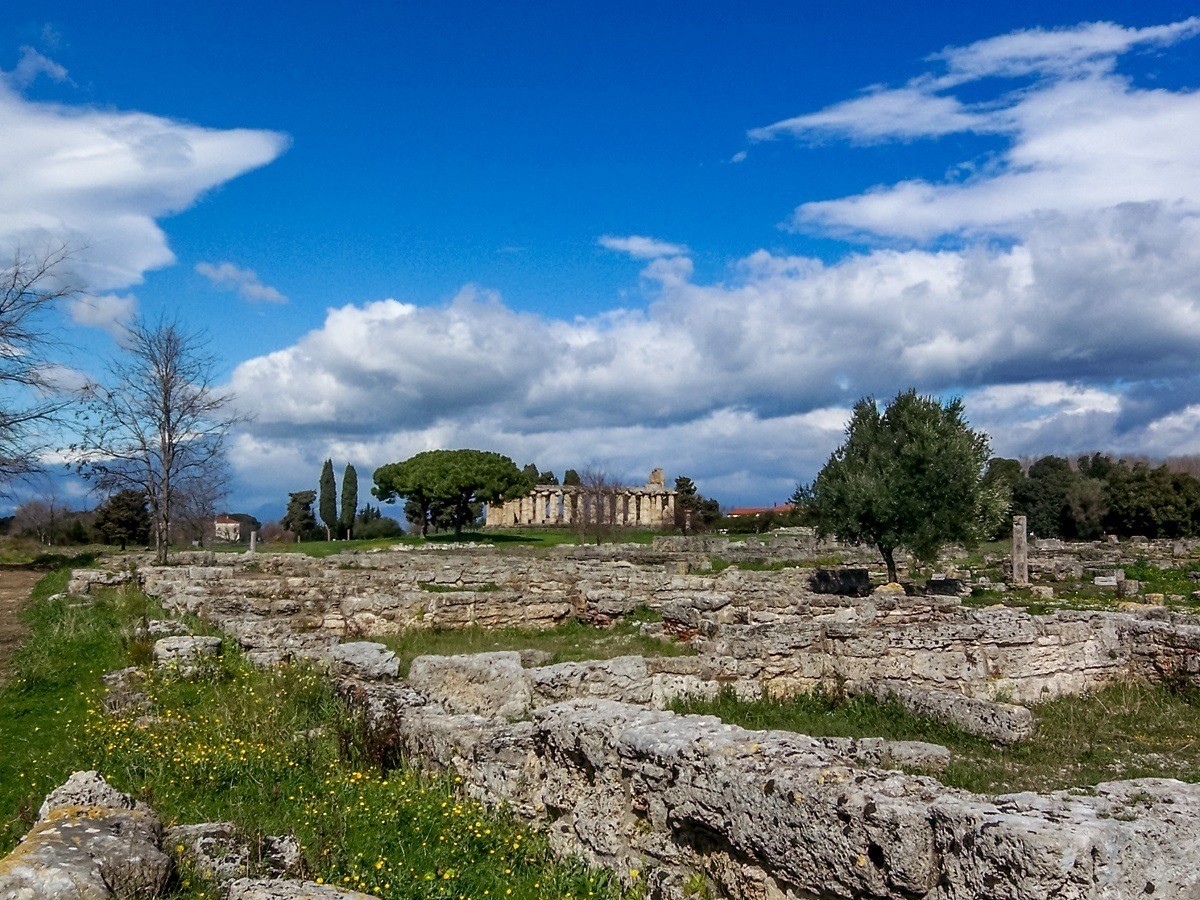
The Paestum ruins are one of the most impressive world heritage sites you’ve probably never heard of. They are certainly the most impressive ancient ruins in Italy that we’ve ever had the chance to visit. However, anyone finding themselves south of Naples really needs to make the effort to visit Paestum.
Visiting the Ruins of Paestum, Italy
Getting to paestum from the amalfi coast.
We’ll be honest, it’s a challenge. From Sorrento or the Amalfi Coast, get to Salerno. The train from Salerno to Paestum runs infrequently (usually just a couple of times a day). The bus runs more frequently and will drop you off on the side of the road about a quarter mile from the ruins.
Walk the rest of the way (head west – the area is not well marked). If you manage to catch the train, you’ll do the same walk (head west), but it’s about a half mile walk. When the road dead ends, make a right to the small village, which is the entrance to the site of the Greek city of Paestum.
Getting to Paestum from Naples or Rome
Take the train to the Paestum stop. The station is one of those unmanned ones. There is no baggage check. Walk west until you hit the archaeological site. Make a right when the road dead-ends and walk to the small village.
The Easy Way to Get to Paestum
There are pricey, private full day and half day tours from most of the major cities in the vicinity, including Amalfi and Naples . For those looking for a more economical option, there is a full-day tour from Sorrento to Paestum that takes in both Salerno and the archaeological site.
Luggage Check
There is no baggage check facilities at the train station or in town. If you have bags, your best bet is to hit up one of the two cafes in town and try to swing a deal. Better yet, leave the baggage at a hotel and make your visit to Paestum as a day trip.
Where to Eat
There aren’t a lot of options here (even less in the off season). We ate at the La Basilica Café di Voza Marco (it’s the one right across from the tourist information office). The pizza is decent and the service is zippy quick (by Italian standards).
Where to Stay
There are a handful of accommodation options right near the archaeological site or near the Paestum beach town close by. ( Check current prices of accommodation options here. )
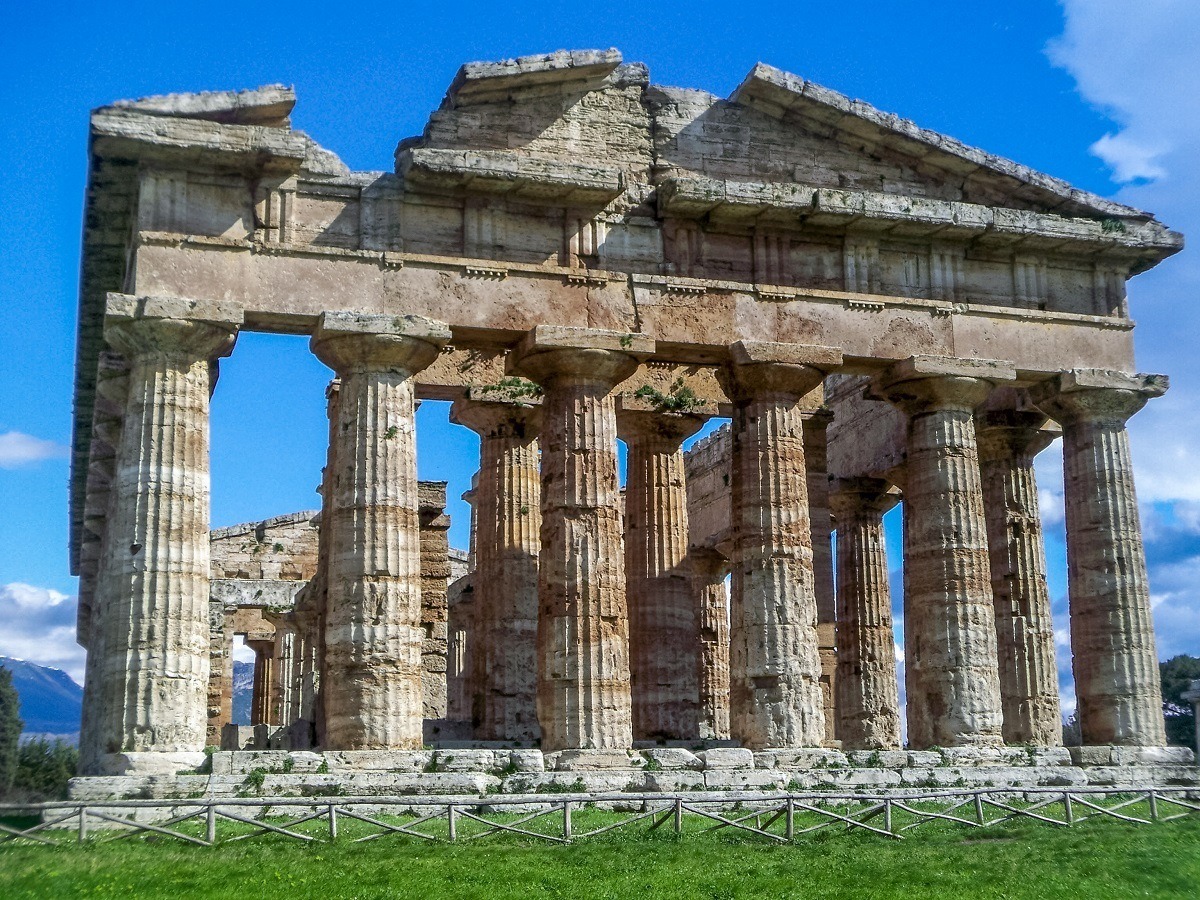
Lance Longwell is a travel writer and photographer who has published Travel Addicts since 2008, making it one of the oldest travel blogs. He is a life-long traveler, having visited all 50 of the United States by the time he graduated high school. Lance has continued his adventures by visiting 70 countries on 5 continents – all in search of the world’s perfect sausage. He’s a passionate foodie and enjoys hot springs and cultural oddities. When he’s not traveling (or writing about travel), you’ll find him photographing his hometown of Philadelphia.
Share this post:
This site uses Akismet to reduce spam. Learn how your comment data is processed .
Saturday 21st of May 2022
I just got back to the states yesterday. I'm so glad I made the effort and added Paestum to my itinerary. Got the best shave and hot towel treatments I've ever had also very peaceful and the near beaches were an added bonus 😉
Thursday 4th of June 2009
Paestum is really really nice.i been there once and i defenitly wanna go there again.
Must-see attractions in Paestum

Paestum's Temples
Very different to Pompeii, Paestum’s ruins are smaller, older, more Greek and – crucially – a lot less overrun. Consequently, it is possible to steal some…
Museo di Paestum
Facing the east side of the ruins, the Museo di Paestum houses a collection of much-weathered metopes (bas-relief friezes). Among these are originals from…
Tempio di Nettuno
Dating from about 450 BC, the limestone Tempio di Nettuno is the largest and best preserved of Paestum's trio of temples; only parts of its inside walls…
The so-called basilica (a temple to the goddess Hera) is Paestum’s oldest surviving monument. Dating from the middle of the 6th century BC, it’s a…
Tempio di Cerere
Tempio di Cerere (6th century BC) was originally dedicated to Athena and served as a Christian church in medieval times.
Tenuta Vannulo
The first organic producer of bufala (water-buffalo) milk, Tenuta Vannulo is a 10-minute drive from Paestum. It makes its mozzarella exclusively from…
More destinations you need to see

- 1 Understand
- 2.1 By train
- 3.1 By foot
<a href=\"https://tools.wmflabs.org/wikivoyage/w/poi2gpx.php?print=gpx&lang=en&name=Paestum\" title=\"Download GPX file for this article\" data-parsoid=\"{}\"><img alt=\"Download GPX file for this article\" resource=\"./File:GPX_Document_rev3-20x20.png\" src=\"//upload.wikimedia.org/wikipedia/commons/f/f7/GPX_Document_rev3-20x20.png\" decoding=\"async\" data-file-width=\"20\" data-file-height=\"20\" data-file-type=\"bitmap\" height=\"20\" width=\"20\" class=\"mw-file-element\" data-parsoid='{\"a\":{\"resource\":\"./File:GPX_Document_rev3-20x20.png\",\"height\":\"20\",\"width\":\"20\"},\"sa\":{\"resource\":\"File:GPX Document rev3-20x20.png\"}}'/></a></span>"}'/>

Paestum (or the Archaeological Park of Paestum [ dead link ] ) has been a UNESCO World Heritage site since 1998. It is in Campania , Italy , and is an ancient Greek (then Lucanian, later Roman ) settlement, with the best preserved Greek doric temples worldwide. It is surrounded by a Roman city wall, and is 40 km south of the city of Salerno .
Most of the ancient Greek/Roman city has not been excavated yet. Three magnificent Greek temples, dating back to the colonization of Magna Graecia (Southern Italy), around the seventh century BC, are preserved together with other Greek and Roman ruins. The construction of the three temples is dated between 550 and 450 BC. Besides the three Greek temples, the site has an ancient gymnasium, amphitheater, city wall and tower ruins, and plenty of Roman house wall ruins. Adjacent to the main entrance to the archaeological area is a modern Archaeological Museum, displaying excavated items such as statues, vases, metalwork, and painted grave stones.
The site has been a tourist attraction for centuries. It was a common destination on the Grand Tour of the 17th to 19th centuries, as an example of the Ancient Greek heritage. In these times, in fact, Greece was part of the Ottoman Empire .

A regional train goes from Salerno or Naples to Paestum station; it takes about 0.5 hr from Salerno (or 1.5 hr from Naples) to Paestum. The train is probably the fastest way to arrive with public transportation. Read about the unified public transport ticket Campania Unico . Buy your ticket to get out in one of the souvenir shops close to the museum or, better yet, before you go. No ticket sale anymore at the Paestum station and machine rarely works. The train station is located due east, within easy walking distance, of the archaeological park and museum.
- Ferry during summer months from Naples , Positano , Amalfi to Salerno . CSTP bus 34 leaves from Piazza della Concordia in Salerno by the base of the ferry dock roughly every hour and takes about one hour to get to Paestum. Alternatively, you could walk a few blocks from the Salerno ferry dock to the Salerno train station and take the train.
- Coaches run throughout the Campania regions, especially in Avellino province, picking locals up for various points and taking them to the site for €9 return.
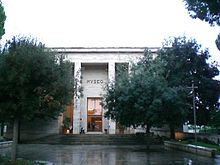
The area in and around Paestum is flat and easy countryside to get around. A jpg map is available online. [ dead link ] Here is the general layout. The ancient settlement is surrounded on all four sides by a Roman wall and gates on the four ordinates. Via Magna Grecia is the modern road that cuts through the middle of the walled old city from north to south. Via Tavernelle or Via Porta Aurea is a modern road just outside the north city walls, and Via Nettuno or Via Porta Giustizia just outside the south city walls. The train tracks are outside the east city walls, and the beach outside the west city walls. The Archaeological Museum and the tourist information booth on Via Magna Grecia, natural focal points for any visit, are in the middle of the walled Paestum.
From the train station, walk west through the old city gate ( Porta Silena ) and continue straight ahead about 10 minutes along a pleasant flat country road to a hotel on Via Magna Grecia, then turn right and walk north to the main entrance to the archaeological park and the two-story modern National Archaeological Museum. Buy your tickets for the archaeological park from the museum. The museum is also a good place for tourist information and rest rooms.
Buses from Salerno stop on Via Magna Grecia near the south entrance to the archaeological park; to get to the main entrance, just walk north on Via Magna Grecia to the museum.
From the historical site to the beach is about 30 minutes further to the west.
- Three ancient Greek temples . There are three magnificently preserved Greek temples on the Paestum archaeological site, but they have all been erroneously designated in the past. Even the signage on site and maps do not always match the most current attributions. The designations change because of newly excavated evidences of the use of the temples. Perhaps further research would call for changes in the current attributions, but that is a scenario for future travelers. For present day travelers, the Greek temple in the northern part of Paestum is identified as a Temple of Athena, and the two Greek temples in the southern part of Paestum are identified as two temples of Hera. All three temples are oriented east-west, with the front facing the rising sun. The oldest temple is the southern most one, the Temple of Hera I (also erroneously called Basilica), built around 550 BC. The temple is wider than most Greek temples, with nine columns across the front and eighteen along the longer sides (9x18). The next oldest of the three temples is the Temple of Athena (also erroneously called Temple of Ceres), built around 500 BC on the highest point of Paestum, which is north of the ancient center of town. It has six columns across the front and thirteen along the sides (6x13). It is the first known temple in the world to mix the Doric columns of the main peristyle with the Ionic columns used in the porch (see Museum). The third oldest is the best preserved Greek temple in Paestum and perhaps the world -- the Temple of Hera II (also erroneously called Neptune Temple or Poseidon Temple), built around 450 BC. It is just north of the Temple of Hera I, and it has six columns across the front and fourteen along the sides (6x14). It belongs to a transitional phase between the archaic and the classic Doric order and incorporates subtle architectural refinements peculiar to the classic Doric order. For example, the base on which the columns rest is not completely horizontal, but humps up slightly in the middle along the sides to offset the illusion of sagging. The Temple of Hera II in Paestum is modeled closely after the Temple of Zeus in Olympia, foreshadowing the most celebrated classic Greek temple, the Parthenon in Athens .

- Other Greek features . In addition to the three majestic Greek temples, there are two other notable Greek archaeological features. One is Heroon , a Greek memorial tomb, c 520 BC, which sits unexpectedly in the middle of the settlement. Well preserved vases found in Heroon are on display at the Archaeological Museum. Across the street from the Museum is a sunken circular Ekklesiasterion , c 480 BC, a civic assembly area large enough for about 500, evidence that Paestum was a democratic Greek city-state.

- Roman ruins . In between the Athena Temple in the northern part of Paestum archaeological site and the Hera Temples in the southern part are many Roman ruins, including an amphitheater, house wall ruins, and Via Sacra, the main street of the ancient settlement. The Roman Forum was the ancient center of town. As with the Greek settlement, much of the ancient Roman settlement have yet to be excavated.
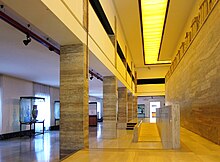
- National Archaeological Museum at Paestum , Via Magna Grecia , ☏ +39 0828 811 023 , +39 0828 722654 . daily 08:30– 19:30 (last admission: 18:50) except on the 1st and 3rd Monday of each month because of maintenance, the museum will be open until 13:40 (last admission: 13:00) . Highlights of the two-story museum include: the Sele metopes, the frescos of grave chambers, especially the Tomb of the Diver, the contents of the Heroon, and the 1943 World War II allied invasion of Italy at Paestum. Open Ticket (Museum + Archeological Area): €9. Combo ticket (Museum+ Archeological Area + Ruins of Velia) €10 valid for 3 days . ( updated Nov 2016 )
- Buffalo farms are famous for their mozzarella cheese. Buffalo mozzarella from Campania bears the "Mozzarella di Bufala Campana" trademark.
- After visiting the antiquities, relax at beach.
- All the souvenirs you forgot to buy anywhere else in Italy , and they are even cheaper than elsewhere.
- Small fake jumping athlete (from the grave frescos).
Around the museum are plenty of Italian restaurants serving the standard food. Try the buffalo mozzarella cheese. It is enjoyed with calzone, vegetable, salad, on pizza, on grilled bread, with tomatoes, or by itself accompanied by olive oil.
- [ dead link ] La Basilica Café ( bar pizzeria ), Via Magna Graecia, 881 ( just north of the Archaeological Museum ), ☏ +39 828811301 , [email protected] . Good and inexpensive food. €5-8 pizzas . ( updated Nov 2016 )
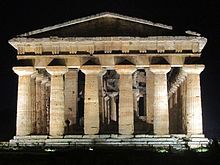
- Hotel delle Rose , Via Magna Grecia 943 ( on street bordering the ruins ). €35 single to €85 quad . ( updated Nov 2016 )
- Holiday Village Parco Elena , Contrada Impiso, 84076 , ☏ +39 0974 841491 , fax : +39 0974 841491 .
- Il Cannito Hotel ( Il Cannito Hotel ), Via Cannito, 84047 Paestum , ☏ +39 0828 1962277 . Small luxury design hotel immersed in the green, 5 km away from Paestum center. Only 4 rooms, internal restaurant and panoramic terrace. Room rates from €200 .
- 40.436293 14.979347 1 Oleandri Resort Paestum - Hotel Village Residence Club , Via Poseidonia 177 . With a large outdoor pool, a hot tub and children's play area, the hotel is set in 30,000 m² of private parkland. The private beach is furnished with sun loungers and parasols. Accommodation is divided into hotel rooms and self-contained apartments. Free wired internet, Wi-Fi and parking. Wired internet is available in public areas and is free of charge.
- The main international hotel chains have their blocks at the beach.
- There is a agricultural farm that rents out beds run by a Belgian.
- Train to north or south only; 30 minutes north to Salerno ; 1.5 hours north to Naples .
- In summer ferries to Amalfi Coast and Naples .
- UNESCO World Heritage Sites
- UNESCO tag to be fixed
- Has custom banner
- Articles with dead external links
- See listing with no coordinates
- Has map markers
- Eat listing with no coordinates
- Sleep listing with no coordinates
- Outline cities
- Outline articles
- City articles
- Salerno (province)
- All destination articles
- Has Geo parameter
- Pages using the Kartographer extension
Navigation menu
Paestum Tourist Office
The visitor information office of positano, amalfi coast.
The Paestum tourist office is at the Paestum archeaological museum, Via Magna Grecia 887 ( tel . +39-0828-811-016, infopaestum.it ).
Also useful: the provincial tourism website: Turismoinsalerno.it .
Tips & links
Azienda Azienda Autonoma Soggiorno e Turismo di Paestum Via Magna Grecia 887, Paestum, Capaccio tel . +39-0828-811-016 infopaestum.it
Planning your time : Give yourself at least a good 2–3 hours at the site and museum —after all, you made the effort and came all this way .
Unelss you can knock it off first thing in the morning, make Paestum an afternoon activity, starting with lunch , then some beach time (and mozzarella time), holding off on the museum and archaeological site until things cool off in the later afternoon—plus, this way you get to watch the sunset light up the stones of the ruins before turning in for the night then moving on the morning.
» Paestum itineraries
- Cruises, activities & tours
- ContextTravel.com
- SelectItaly.com
- Intrepid.com
- City-discovery.com
- Multi-day packages
- Gadventures.com
- Sights & experiences
- Local tourist offices
- Turismoinsalerno.it (official; entire area)
- Amalfitouristoffice.it (Amalfi)
- Aziendaturismopositano.it (Postiano)
- Ravellotime.it (Ravello)
- Sorrentotourism.com (Sorrento)
- incampania.it (regional)
- Useful private sites
- Amalficoast.com
- Amalficoast.it
- Museincampania.it
- Theamalficoast.net (abandoned, but some everrgreen content still useful)
- Booking.com
- HotelsCombined.com
- Priceline.com
- Hostelworld.com
- Bedandbreakfast.com
- Bed-and-breakfast.it
- Bbitalia.it
- Karenbrown.com
- Apartments & villas
- Rentalo.com
- Homeaway.com
- Belvilla.com
- Interhomeusa.com
- Villasintl.com
- Craigslist.org
- Hostels & campgrounds
- Hostelbookers.com
- HostelsClub.com
- Hostelz.com
- Residence hotels
- Biz-stay.com
- Agriturismo (farm stays)
- Terranostra.it
- Turismoverde.it
- Agriturist.it
- Public transit
- Bus: Unicocampania.it , Sitasudtrasporti.it
- Circumvesiviana train (Naples-Sorrento): Eavsrl.it
- Italian rail (Naples-Salerno): Trenitalia.com
- Ferries: Alilauro.it (Sorrento-A.C., Naples-A.C., Capri-A.C.); Alicost.it (Sorrento-A.C.; Salerno-A.C.); Coopsantandrea.com (Sorrento-A.C.; Salerno-A.C.; Capri-A.C.); Travelmar.it (Salerno-A.C.)
- Napoli-Capodichino: Aeroportodinapoli.it
- Roma Fiumicino: Adr.it
- Airport transfers (Naples):
- Bus (€10 to Sorrento; 75 min): Curreriviaggi.it
- Private (€19 to Sorrento, €22–€25 to Postiano, Amalfi, or Ravello): Viator.com
- Taxi (€100 to Sorrento, €120 to Positano, €130 to Amalfi): Aeroportodinapoli.it/taxi , Comune.napoli.it/servizinondilinea
- Airport transfers (Rome):
- Bus (total: €28–€30; 5+ hr): Marozzivt.it (bus Sorrento-Roma Tiburtina; €20–€22; 4 hr) + Trenitalia.com (train Tiburtina-airport; €8, 48 min)
- Private (€65–€120; 3 hr): Viator.com (note: Rome airport or hotel to Sorento or any Amalfi Coast town)
- Momondo.com
- AutoEurope.com
- CheapOair.com
- Cheapflights.com
- CheapTickets.com
- Regional rail & access points
- [The Amalfi Coast itself has no rail service, only bus and boat. Sorrento is the closest train station to the most popular A.C. towns, and the over-the-sea Sorrento-Salerno bus ride is more spectacular than the cliff-hugging Salerno-Sorrento reverse route.]
- ItaliaRail.com
- Raileurope.com
- Trenitalia.com
- Autoeurope.com
- RentalCars.com
- CarRentals.com
- AutoSlash.com
- Europebycar.com
- Renaultusa.com
- Short-term leases
- Car resources
- Emergency service/tow: tel . 803-116
- Highway agency: Autostrade.it (traffic info, serivce areas, toll calculator, weather)
- Italian automotive club (~AAA): Aci.it
- ZTLs: Ztl-italia.blogspot.com (lightly outdated, but handy, links to cities' traffic-free zones)
- Amalfi Coast buses
- Unicocampania.it
- Sitasudtrasporti.it
- Regional & long-distance bus (coach) info
- Orariautobus.it
- Italybus.it
- Oraribus.com
- Ferries & hydrofoils
- Alicost.it (Sorrento-Positano-Amalfi; Capri-Positano-Amalfi-Salerno)
- Travelmar.it (Positano-Amalfi-Salerno; Amalfi-Minori-Maiori)
- Alilauro.it (connecting Sorrento and Naples, Amalfi, Positano, Capri, or Ischia; also connecting Amalfi, Positano, or Salerno with Capri or Ischia)
- Gescab.it (connecting Capri with: Sorrento, Positano, Amalfi, Salerno)
- Coopsantandrea.com (Sorrento-Positano-Amalfi-Minori-Maiori-Salerno; Amalfi-Capri)
- Caremar.it (Sorrento-Capri; Naples-Capri)
- Private boat transfer (Naples-Sorrento, Naples-Amalfi)
- Coastal cruises & island excursions
- Viator.com (from Sorrento, Amalfi, Poistano, or Praiano)
- SelectItaly.com (from Positano)
- Lucibello.it (from Positano)
- Coopsantandrea.com (from Amalfi)
- Multi-day sailing trips & yacht charters
- Transport between Naples train station and Molo Beverello port
- Bus/tram (€1): Anm.it (Tram 1; bus 151)
- Taxi (€11): Consorziotaxinapoli.it
- Private car to docks (€7–€35): Viator.com
- Private car from docks (€5–€28): Viator.com
Related pages
- Paestum planning
- Paestum homepage
- Nearby: Salerno
- Nearby: Amalfi Coast
- Campania homepage
Share this page
Search ReidsItaly.com
Shortcuts to popular planning sections:
Airfares , Cars , Trains , Tours , Packages , Cruises , Lodging , Itineraries , Info , Packing , Prep , Comm
- Map of all regions
- Emilia Romagna
- Trentino Alto-Adige
- Leaning Tower of Pisa
- Sistine Chapel
- Michelangelo's David
- Da Vinci's Last Supper
- Grand Canal of Venice
- Blue Grotto
- Brunelleschi's Dome
- Chianti vineyards
- Cinque Terre
- Ponte Vecchio
- Basilica of St. Francis
- Temple of Concord
- Mole Antonellina
- Castel del Monte
- Secret Hotels
- Vietri sul Mare
- The Chianti
- Planning FAQ
- Riomaggiore
- Monterosso al Mare
- Lake Maggiore
- Lake Lugano
- Lake Varese
- Lazio lakes
- San Gimignano
- Montepulciano
- Tuscan Itineraries
- Top 10 tips
- Getting to Italy
- Save on airfares
- Tours & Specialty trips
- Vacation packages
- Getting around in Italy
- Italian trains
- Renting a car
- Save money on transportation
- Top 10 lodging tips
- Amazing alternatives to hotels
- Booking hotels
- How Italian hotels work
- The hotel hunt
- Hotel scams & rip-offs
- Save money on lodging
- Top 10 planning tips
- Time to budget for cities
- Daily itinerary tips
- Sights to book ahead
- Perfect city & regional itineraries
- If you have one week...
- If you have two weeks...
- The countdown calendar
- Book a tour
- Book airfare
- Book hotels
- Book a rental car
- Book train tickets & railpasses
- Book a cruise
- Book sightseeing
- Get travel gear
- Choose guidebooks
- Information, guidebooks, & passports
- Packing lists & tips
- Money matters
- Shopping & taxes
- Health, safety, & insurance
- Communications: Italian lessons to cellpones
- Saving on airfares
- Saving on train travel
- Saving on car rentals
- Saving on cruises
- Saving on lodging
- Saving on dining
- Saving on sightseeing
- Free sightseeing
- Free lodging (honest)
- Free dining (seriously)
- Worst savings tips
- Sightseeing tips
- Microtours of cities & sights
- Save money on sightseeing
- Dining tips
- Save money on dining
- Top experiences
- Italian icons
- Culinary adventures
- Alternative accommodations
- Once-in-a-lifetime
- Reid's offbeat experiences
- Italian skills
- Learn something new
- Italian modes of transport
- Opera & concerts
- Get religion
- Sports & outdoors
- Retail therapy
This article was written by Reid Bramblett and was last updated in May 2015 . All information was accurate at the time. about | contact | faq » THE REIDSITALY.COM DIFFERENCE « åß Copyright © 2008–2017 by Reid Bramblett . Author: Reid Bramblett
Like ReidsItaly? Try ReidsEngland.com

Switch to the dark mode that's kinder on your eyes at night time.
Switch to the light mode that's kinder on your eyes at day time.

Paestum: these are the magical sights
The best preserved Greek temples are not found in Greece, but in southern Italy, the ancient Magna Graecia. The most famous are those of Sicily, with the Temple Valley of Agrigento, the remains of Selinunte and the beautiful temple of Segesta. But at least as important is Paestum, 40 kilometers south of Salerno in Campania, where temples and walls still look almost as they did 2.500 years ago. An absolute must for lovers of history, culture and Italy.

Table of contents
A 2.600 year old city wall
Map of paestum showing the sights, the 3 doric temples of paestum, from greeks, lucani and romans, back in time, museum paestum: dancing women and the diver, practical information paestum, eating and staying overnight.
Paestum was founded around 600 BC as Poseidonia (city of Poseidon, the god of the sea) by colonists from Sybaris, a Greek city on the south side of Calabria. The new city was located close to the sea in the fertile plain of the Sele River and therefore met the main wishes of the colonists: accessibility, fresh water and arable land.

Although there were already a few native villages, their inhabitants were no match for the well-organized Greeks and were chased inland without much ado.
But the new colony was not completely safe either. That is why the Greeks built one at the mouth of the Sele heraion , a sanctuary dedicated to Hera, the wife of the supreme god Zeus. She had to protect them against the Etruscans, who posed a threat from the north.
A city wall several meters wide and 5 kilometers long was built around Poseidonia, most of which is still standing.

About 550 BC. the young city could boast of the construction, on the south side of the built-up area, of a prestigious Doric temple, also dedicated to Hera, known as the Basilica .

On the north side followed between 510-500 BC. a temple – il Tempio di Cerere – which according to tradition is dedicated to Ceres, the goddess of agriculture, but in reality it is a temple of Athena, goddess of wisdom and war.

The third and most monumental temple was built around 480-470 BC. next to Hera's. He is known as the Temple of Neptune , even though there is no indication that it was dedicated to the god of the sea (Poseidon in Greek, Neptune in Latin).

To whom, we do not know, but archaeologists have suggested that this structure could have been intended as a thank you to the gods for the Greek victories over Persians, Carthaginians and Etruscans in those years.
That heyday came later in the 5th century BC. an end when the Greek city-states came to blows with each other, with the sad end being the gruesome feud between Athens and Sparta, exhaustively described by Ilja Pfeijffer in his novel Alcibiades .
Poseidonia did not escape this either. By the end of the 5 e century BC it was taken over by the Lucani, an Italian people who already controlled a large part of southern Italy. They renamed the city Paistom, but in turn had to hand it over to the Romans, who annexed the city in 273 BC. and corrupted its name to Paestum.

During all these changes of power, relatively little was destroyed. It was probably a gradual transition, with the temples largely remaining intact and in use. Shortly after the beginning of our era, Paestum was still described as one oppidum (fortified city), but after that the area slowly emptied.
The houses of the ancient city collapsed and disappeared under earth on which sheep, horses and (mozzarella) buffalo grazed. Only the temples continued to tower proudly above it all.
Therefore, Paestum, which was declared a UNESCO World Heritage Site in 1998, is still located in a rural area, unlike Agrigento, for example, where they have built new buildings almost as far as the Valley of the Temples.
A walk in the Paestum park is a magical experience. Because of the dominating temples and the straight, perpendicular streets, which show what kind of architects and city planners the Greeks were.
Because of the ancient walls built in large blocks of locally quarried travertine, the basalt roads, the mysterious sacello (a kind of chapel) with its roof of terracotta tiles, the Roman theater, the monumental olive trees and holm oaks, not to mention the spacious picnic area and the adjacent restaurants.

All ingredients for a pleasant – and educational – day. (All year round, but especially in spring and autumn, when the weather is usually good and the temperature bearable.)
Don't forget the very modern museum (opposite the entrance to the archaeological site). Not only utensils, statues, masks and vases from Paestum have been collected here, but also dozens of them metopes from the heraion on the Sele (which itself is poorly preserved).

This concerns the reliefs in the shape of lion heads, dancing women and scenes from Greek mythology, which originally decorated the strip above the columns of the temple.

Furthermore, the museum has an enormous collection of - often wonderfully well preserved - paintings from the inside of Greek and Lucan tombs in the immediate vicinity of Paestum: images of people, animals and mythological creatures.

The best known of these is the Diver , the Diver, a naked young man who dives into the depths from a springboard, probably as a representation of the transition to the other world. (The Duiker hall is currently closed for maintenance, but will reopen in early 2024.)

The museum has about 300 painted walls of tombs, of which only a small part can be exhibited. But if you take a tour with the guide, you will also see the rest of the collection in the depths of the museum. And that is also an interesting experience.

Opening times, prices and entrance tickets
- The Archaeological Park of Paestum and nearby Velia is open from 8.30:19.30 am - XNUMX:XNUMX pm.
- Prices: from November to February €10; young people up to 25 years €2; from March to November €15; young people up to 25 € 2.
- Entrance tickets can be purchased at the museum, at the main entrance to the Tempio di Nettuno or online. More information at Museo Paestum (official website). Also in English.

Aan dining options no want in Paestum. Opposite the main entrance to the archaeological site you can enjoy a plate of pasta or a quick bite. A little further on, on Via Tavernelle, you can have lunch or dinner right opposite the ancient city wall at Antiche Mura or Ristorante Tavernelle. A few kilometers further you can enjoy the grandiose (and slightly more expensive) cuisine of Ristorante Osteria Demetra, Via Laura 104 Capaccio. (Paestum is located in the municipality of Capaccio.)

On the map below you can see the options stay overnight close to the Archaeological Park of Paestum.

campania Paestum travel tips Salerno

Written by Aart Heering
Historian who has lived in Italy for more than 30 years, 20 of which as a journalist and 12 as a press and political officer at the Dutch embassy in Rome. Has been working as a journalist again since May 2022. Active member of the Gruppo del Gusto, the gourmet group of the foreign press association in Rome.
Give a reaction cancel reply
The email address will not be published. Required fields are marked with *
Save my name, email on this site for the next time.

Notable words and expressions in Italian (part 2)

False friends in the Italian language
Top tour operators for italy.

© 2009-2024 This is Italy is published by DYC media
Ad blocker detected!
- Share full article

How a Tourist Paradise Became a Drug-Trafficking Magnet
Costa Rica’s lush rainforests, which blanket a quarter of the country, are being infiltrated by cartels on a quest to find new trafficking routes to evade the authorities.
Costa Rican Border Police agents patrolling in a rainforest. Costa Rica is the only country in Latin America without a military. Credit...
Supported by

By Maria Abi-Habib
Photographs by Alejandro Cegarra
Reporting from Limón, Costa Rica
- Sept. 15, 2024 Updated 10:02 a.m. ET
Before Christian Puchi set off for work in the rainforest, he made sure his machete was fastened to his hip and his fellow forest rangers were doused in mosquito repellent. They jumped in their boat and navigated through throngs of tourists already on the water.
The tourists clutched binoculars, hoping to catch a glimpse of Costa Rica’s famous turtles. Mr. Puchi and his men just hoped to come back unscathed.
They can handle the poisonous frogs, venomous snakes and crocodiles. But with too few staff and inadequate gear, they’re no match for the most dangerous threat now lurking in the national parks, violent drug cartels.
“We used to focus on conservation, finding jaguar tracks, turtle nests, normal stuff. Now, protected areas like this one have become drug warehouses,” said Mr. Puchi, 49, a forest ranger for over 20 years.
Costa Rica, often considered one of the region’s most idyllic destinations, long escaped the scourge of cartels that has pervaded the region. Its national motto, “pura vida” or pure life, has for decades attracted honeymooners, yoga retreat goers and bird-watching enthusiasts.
But now, the lush forests blanketing a quarter of Costa Rica are being infiltrated by drug cartels seeking new trafficking routes to evade the authorities.

Costa Rica surpassed Mexico to become the world’s leading transshipment point for cocaine destined for the United States, Europe and beyond in 2020, according to the U.S. State Department . Mexico returned to the top spot last year, but Costa Rica remains close behind.
And with the rising drug trafficking, a surge of violence has hit the nation.
Homicides in Costa Rica soared 53 percent from 2020 to 2023, according to government figures. The same is happening in nearby Caribbean countries, with rising homicide rates a result of gangs competing over drug markets, the United Nations said in 2023.
In Costa Rica, schools are becoming crime scenes, with parents gunned down while dropping their children off. Plastic bags filled with severed limbs have been discovered in parks. A patient was recently shot dead inside a hospital by members of a rival gang.
Local gangs battle for control of routes within the country, a competition in greed and ruthlessness to become the local muscle for the rival Mexican criminal groups operating here, largely the Sinaloa and Jalisco New Generation cartels.
“There used to be a limit here, people weren’t killed indiscriminately,” Mario Zamora Cordero, Costa Rica’s minister of public security, said in an interview. “What we are witnessing, we have never seen before. It’s the Mexicanization of violence, to provoke terror and panic.”
‘No Power to Do Anything About It’
The gangs’ trafficking operation is fairly straightforward.
Colombia’s Gulf Clan, the country’s main drug trafficking cartel, pushes cocaine across the Pacific in crudely made submarines to Costa Rica’s forest-covered shores, according to American and Costa Rican officials.
The traffickers then rely on thick tangles of mangroves intertwined with river canals and rainforests as a gateway into the country. About 70 percent of all the drugs coming into Costa Rica enter through its Pacific coast, according to the country’s coast guard.
Much of the cocaine is then transported overland by local groups working with Mexican cartels to a port on the country’s eastern coast, where it is crammed into fruit exports destined abroad.
Costa Rica seized 21 tons of cocaine last year, although Mr. Zamora said hundreds of tons passed through the country undetected annually.
It is not just cocaine that has Costa Rican officials worried. Fentanyl is starting to creep in, too.
In November, Costa Rica’s first fentanyl laboratory was found and dismantled by the local police working with the U.S. Drug Enforcement Administration. Many of the confiscated fentanyl pills were bound for the United States and Europe, according to a U.S. cable from the embassy in San José, the capital, obtained by The New York Times.
“Costa Rica is a prime target for cartels in search of new markets for fentanyl,” read the cable, which was marked “sensitive” and sent to Washington last year. The organizations are bent on “transforming Costa Rica into a new hub.”
Rob Alter, the director for the U.S. Embassy’s Bureau for International Narcotics and Law Enforcement Affairs, said in a statement that Costa Rica remained “a strong and enduring U.S. partner despite facing significant security challenges from international narcotics trafficking, like many countries in the region.”
Costa Rica is the only country in Latin America without a military, so Mr. Zamora, the minister of public security, is pushing to expand the national police force, which numbers about 15,000 for a population of 5.2 million. (Nearby Panama has a force of 29,000 for 4.4 million people.) His ministry finally received a 12 percent budget increase in 2024 after seeing cuts over the previous five years.
But ground zero in this drug war is the national parks, where sloths fall out of trees, jaguars roam and macaws circle above. The cartels face little resistance.
Just under 300 park rangers are responsible for patrolling 3.2 million acres of protected forest. They are armed with weapons better suited for hunting small animals than countering the automatic machine guns and rocket-propelled grenades wielded by the traffickers. And park rangers lack the authority to make arrests.
The challenges they face are expansive. The nearest population center is about an hour away by boat. Phone service is weak or nonexistent. On a recent visit, the team’s single cellphone — which people call to report suspicious activity— was propped up by a stack of logs, in hopes of catching a signal.
At night, the rangers are awakened by low-flying planes and helicopters landing illegally in the forest several times a month. “We have no power to do anything about it,”said Miguel Aguilar Badilla, who leads a team that patrols 77,000 acres in Tortuguero National Park.
On a boat patrol in July, Mr. Aguílar and his team puttered through the canals as they pushed deeper into the rainforest. They came across a boat of fishermen and asked for their permits.
“I’ve been trying to call you since yesterday,” one fisherman said, explaining that he had seen some men with guns in the rainforest. “No one picked up.”
“We haven’t had reception for a few days,” Mr. Aguilar said. “If we ever have it.”
‘Mexico Is No Longer the Most Important Player’
About 40 miles south of the park sits the Moín seaport in the city of Limón. As Costa Rica’s largest port, it has helped the country meet a booming demand for pineapples and bananas from the United States and Europe — key cocaine export destinations.
As a result of the port’s lucrative possibilities, violence has exploded in Limón as local gangs allied with Mexican cartels compete for territory. Limón now has the highest rates of violence in the country.
The Moín seaport first opened in 2019. Just a year later, Costa Rica became the world’s largest transshipment point for cocaine.
Mexican and Colombian cartels now use fruit warehouses in Limón to store their drugs, as fronts to send containers of cocaine abroad and to launder their money through agricultural farms, Costa Rican officials said. The produce can bruise easily and is laborious to sort through for security checks; therefore, the fruit must be transported quickly before it rots, putting pressure on ports to get shipments moving fast.
“The world is a logistics puzzle and the narcos are experts at logistics,” said Mr. Zamora. And the traffickers always seemed a step ahead.
The Costa Rican authorities recently found that the criminal groups were employing scuba divers to weld underwater hulls to the bottoms of ships that could carry up to 1.5 tons of cocaine. The authorities also discovered that local traffickers were smuggling soda bottles filled with cocaine converted into liquid form to Europe and the Middle East.
Randall Zuñiga, the director of the Judicial Investigation Department, Costa Rica’s equivalent of the F.B.I., said the liquid cocaine discovery had spooked the authorities, signaling the growing sophistication of the country’s traffickers.
“The narcos used to be focused on getting drugs up to Mexico to enter the U.S.,” Mr. Zuñiga said. “But Mexico is no longer the most important player, because Costa Rica is a bridge to Europe, which is now flooded with cocaine.”
‘We Have to Adapt’
During a recent joint operation combining Costa Rica’s park rangers and the border police, the officers strapped on bulletproof vests, life jackets layered on top. Their boats — donated by the United States — sliced through the calm waters of a river canal as they scanned mangroves for any signs of suspicious activity.
As the captains killed their engines to drift ashore, the officers jumped from the deck, their boots quickly sinking into a foot of thick mud. The men wilted in the humidity, which enveloped them in a thick blanket of tropical heat as they patrolled the forest.
The joint operation unit is the first time the nation’s park rangers, overseen by the ministry of environment and energy, are working with the police, sharing their knowledge of the tricky terrain.
“It is a relationship born out of necessity,” Franz Tattenbach, the minister of environment and energy, said in an interview. “The threat has changed, and we have to adapt.”
The joint force’s efforts are supported by Costa Rica’s coast guard at an outpost about 50 miles to the south. The coast guard patrols the Pacific and intercepts suspicious boats by ramming into them at full speed on rough waters.
It is not only the drug’s transit to the Moín port that Costa Rican officials worry about, but also domestic consumption. The nation is facing an addiction crisis unlike anything it has ever dealt with before.
Nowhere is the crisis as acute as in Limón, the port. Crack cocaine has flooded the streets, police officials said.
New York Times journalists accompanied the police on a night patrol as they set up random checkpoints in the streets, searching for drugs and illegal weapons.
At one point, the police raided a sprawling slum, running through alleyways barely wide enough to fit a baby stroller, as the tropical rain beat down on them.
They entered a drug den, waking up residents from deep, drug-induced slumbers and lining them up against the walls of a shoddily constructed maze of rooms.
One woman leaned into the wall. She sighed and closed her eyes as an officer patted her down and asked for her identification. Another officer said she was a repeat offender, but they were looking to find her help, not lock her up.
She slowly opened her eyes, staring listlessly at graffiti scrawled on the wall before her.
“If God is with me, who can be against me,” it read.
The officers gave her back her identification. She stared at it in confusion, then crouched back into her plywood lair, to return to a hazy sleep.
David Bolanos contributed reporting.
Maria Abi-Habib is an investigative correspondent reporting on Latin America and is based in Mexico City. More about Maria Abi-Habib
Around the World With The Times
Our reporters across the globe take you into the field..
’Ivan the Troll’: A 3D-printed gun design co-created by a man who lives in Illinois has been linked to terrorists, drug dealers and freedom fighters in at least 15 countries. Read our investigation.
Violence Resurges in India: Ethnic tensions have turned the Indian state of Manipur into an open war zone. Struggling to contain the unrest, the authorities have reimposed a curfew and internet blackout.
Slovakian Leader Targets Enemies: Returning to work after being shot , Prime Minister Robert Fico has purged prosecutors, cultural officials, journalists and others he believes fueled “hatred and aggression” against him.
’Rupture’ in French Politics: President Emmanuel Macron’s newly picked prime minister wasted no time in putting a pointed distance between himself and France’s weakened leader .
Mexican Judicial Overhaul: Nearly all judges in Mexico could soon be elected . Legislation passed by Congress could produce one of the most far-reaching judicial overhauls in any major democracy.
Advertisement

IMAGES
VIDEO
COMMENTS
Paestum tourist information. Paestum is a truly enchanting and atmospheric place, and a 'must' on any classical tour of Italy. Just south of the Sorrento peninsula and Amalfi Coast, and a mile inland, this is a haunting archaeological site where three Greek temples stand in the middle of the countryside. Paestum is listed as a UNESCO World ...
Paestum. Italy, Europe. Paestum is home to one of Europe's most glorious archaeological zones. Deemed a World Heritage site by Unesco, it includes three of the world's best-preserved ancient Greek temples, as well as an engrossing museum crammed with millennia-old frescoes, ceramics and daily artefacts. Among these is the iconic Tomba del ...
Location: Paestum is located in the Province of Salerno in Campania, Italy. Hours: The archeological area of the ruins is open every day from 8:30 a.m. to 7:30 p.m. Admission: From December through February, the cost for an adult to visit Paestum is 6 Euros; admission for students 18 to 25 years of age is 2 Euros; a family pass is 10 Euros.
No guide to Paestum is complete with some must know tips for visiting the site and museum. 1. Where Is Paestum. Paestum is located in the Campania region of southern Italy. It's situated on the Tyrrhenian Sea coast, in the province of Salerno. The town is considered to be the "capital" of the Cilento region.
Paestum is an open air archaeological site and museum, with ancient ruins of three Greek temples, houses, ancient city piazzas and artifacts. The most impressive things to see in Paestum I believe are the three Greek temples and the museum. The three Greek temples. The city of Paestum has three Greek temples in a stunning state of conservation.
Monday to Sunday: 8:30 AM to 7:30 PM during the summer months (April - June), 8:30 AM and to 5:00 PM in the winter season (November to March). Last Entry: 6:50 PM from April to June, 4 PM from October to March. Closure: The Archaeological Park remains closed on 25 December and 1 January. NOTE: The Paestum Museum is open from 8:30 AM to 1:40 PM ...
Paestum. The plain near the Gulf of Salerno, part of the Tyrrhenian Sea, proved a poor site for the substantial settlement founded by Greeks around 600 BCE, surrounded as it was by malarial marshlands.But despite malaria, it survived for two centuries and then as a Roman city for 1,000 years more.. It wasn't until the region was devastated by the Saracens in the ninth century that its ...
1. Archaeological Park of Paestum. 5,284. Ancient Ruins. Founded by Greek colonists, the ancient city of Poseidonia dates from 600 B.C. It was abandoned for centuries, but the remarkably well-preserved Greek temples were excavated in the mid-18th century…. See ways to experience (63) 2024. 2.
The Paestum area offers a myriad of activities and sites to explore. From archaeological sites to idyllic beaches and picturesque villages, there's so much to see and do. The archaeological sites of Pompeii and Herculaneum. The natural site of Vesuvius, the volcano of Naples. The Almafitaine coast.
Paestum is an ancient town in the South of Italy, originally built by Greek colonies around the year 600 a.C. It is now an archaeological park where you can see ancient ruins dating back to Greek and Roman times. It has several areas of interest but has four things to see that truly are the star of the show: the temple of Neptune, the temple of ...
These ruins are comprised of three major Greco-Roman temples and a number of smaller ruins. Some of the ancient Greek temples at Paestum pre-date the Acropolis in Athens, Greece by several hundred years. Most are from the Doric period: 600-400 BC. They are ancient. And they are remarkably well preserved.
Paestum's Temples. Paestum. Very different to Pompeii, Paestum's ruins are smaller, older, more Greek and - crucially - a lot less overrun. Consequently, it is possible to steal some…
Paestum. Paestum (or the Archaeological Park of Paestum) has been a UNESCO World Heritage site since 1998. It is in Campania, Italy, and is an ancient Greek (then Lucanian, later Roman) settlement, with the best preserved Greek doric temples worldwide. It is surrounded by a Roman city wall, and is 40 km south of the city of Salerno.
A beautiful walk loved by thousands of tourists. About 5 Km to be run all around one of the most enchanting antique boundary wall in Southern Italy, with four main doors (Aurea, looking north; Sirena, on the east-side; Giustizia, facing south; Marina, west), many minor doors and a good 28 towers.
from $352 per adult. From Castellabate: Paestum Temples+Mozzarella Farm. 2. from $517 per group. Private Tour from Salerno to Vietri sul mare, Pompeii and Paestum. 1. from $506 per group. Tour at the Temples and the National Museum of Paestum.
from ₹42,942 per adult. Paestum: Private Tour of Greek Temples and Archaeological Museum. 38. from ₹15,984 per adult. Likely To Sell Out. Paestum Private: Temples & Archaeological Museum with Your Local Archaeologist. 8. from ₹22,425 per group. Grand Tour Amalfi Coast, Naples, Capri, Pompeii, Salerno, Paestum and Caserta.
Get information on Paestum Travel Guide - Expert Picks for your Vacation hotels, restaurants, entertainment, shopping, sightseeing, and activities. Read the Fodor's reviews, or post your own.
Capaccio-Paestum is the northern entryway to the Cilento National Park and Cilento Coast. From here, to the south, you'll start off with Agropoli and then the curves and folds of the mountains that lead to the sea increase and lead to the heart of the Cilento, a land rich in tradition, natural beauty and unspoiled seaside. Discover attractions ...
The Temple of Hera is the oldest, best preserved and most beautiful Doric temple in existence today. Paestum has always been a bit shrouded in mystery, though. It was probably founded around 650 BC by a group of Greeks who named their new colony Poseidonia, after the most important of their gods (known in the Roman realm as Nettuno, or Neptune ...
Paestum Tourist Office. Tourist Office. The visitor information office of Positano, Amalfi Coast. The Paestum tourist office is at the Paestum archeaological museum, Via Magna Grecia 887 ( tel. +39-0828-811-016, infopaestum.it ). Also useful: the provincial tourism website: Turismoinsalerno.it.
Practical information Paestum. Opening times, prices and entrance tickets. The Archaeological Park of Paestum and nearby Velia is open from 8.30:19.30 am - XNUMX:XNUMX pm. Prices: from November to February €10; young people up to 25 years €2; from March to November €15; young people up to 25 € 2.
Costa Rica's lush rainforests, which blanket a quarter of the country, are being infiltrated by cartels on a quest to find new trafficking routes to evade the authorities.